



was the






was the

By Chris King Of The St. Louis American
State Senator Jamilah Nasheed (D-St. Louis) challenged Gov. Jay Nixon to take “immediate action” to clean up the former Pruitt-Igoe site in North St. Louis by approving Brownfield Remediation Tax Credits. She made the request in a letter dated April 26 that was copied to the directors of the Missouri Department of Economic

Development and the Missouri Department of Natural Resources.
“The director of the Department of Natural Resources together with the director of the Department of Economic Development must approve all applications for the Brownfields tax credits needed for the clean-up of the Pruitt-Igoe site,” Nasheed wrote.
“As the governor, you oversee both of these departments. I urge you to do all in your power to ensure that any application for Brownfield Remediation Tax Credit program be approved
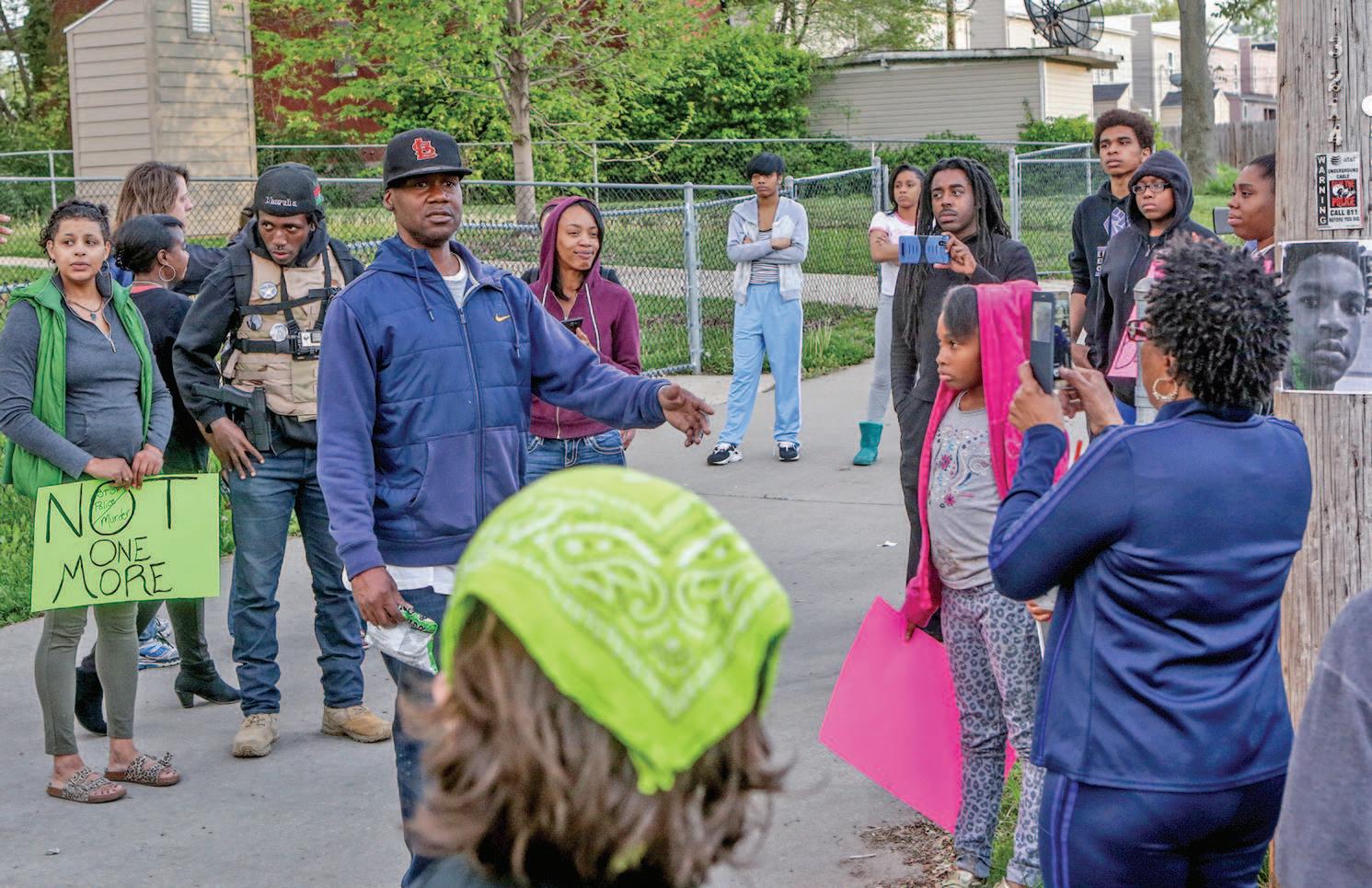


n “I ask you to take immediate action to expedite the use of the Brownield Remediation Tax Credit program to clean up the site.”
– State Senator Jamilah Nasheed
By Carolina Hidalgo Of St. Louis Public Radio
Clergy members, activists and community members came together Thursday, April 21 to mourn the death of Jorevis Scruggs, two days after the 15-year-old was fatally shot by St. Louis police. Around three dozen people gathered, placing teddy bears and “Black Lives
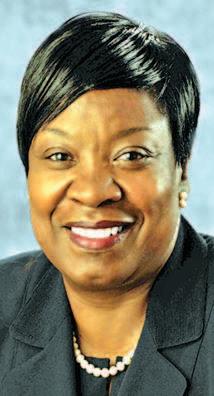

Prince’s sister Tyka Nelson filed on Tuesday to open a probate case in Minnesota’s Carver County, which is where her brother’s Paisley Park estate is located. In the documents, she states that, “I do not know of the existence of a Will and have no reason to believe that the Decedent executed testamentary documents in any form.”
Prince was worth $300 million according to various estimates, including one from Celebrity Net Worth. And his estate is expected to grow as sales of his music have exploded since his death.
Tyka Nelson is the only full sibling of Prince, who
died last week at the age of 57.
Prince was not married and had no living children who could potentially inherit the hundreds of millions to come from his estate.
The singer had a thriving brand which included thousands of unreleased songs, a record label and his Paisley Park property.
Nelson and Prince also have half siblings, John Nelson, Norrine Nelson, Sharon Nelson, Alfred Jackson and Omar Baker, all of whom are also named in the petition as heirs.
Tyka Nelson has requested that a special administrator be appointed to deal with the singer’s assets.
Bill Cosby appeal rejected, sexual assault case can proceed
A superior court in Pennsylvania rejected Bill Cosby’s appeal and lifted a hold on criminal trial proceedings, paving the way

for the sexual assault case to move forward in county court. The comedian’s lawyers had argued in February that a previous deal with a former district attorney barred him from criminal prosecution. A judge ruled prosecutors could go forward with the case, and Cosby’s lawyers appealed that ruling.

A stay, or hold, was put on the proceedings pending the
ruling on the motion to reject the appeal, which was lifted Monday.
In a statement released after the judge’s ruling Monday, Montgomery County District Attorney Kevin Steele said the case can now move on to a preliminary hearing, and that his office is looking forward to presenting the case.
Cosby faces felony charges in the 2004 alleged sexual assault of former Temple University employee Andrea Constand
The district attorney says evidence from recently unsealed portions of a civil deposition from 2005-2006 involving Constand warrant charges. The civil case was settled on undisclosed terms.

Beyhive on the prowl for ‘Becky with the goo hair’
Ever since Beyoncé dropped her “Lemonade” album, fans have been obsessed with one of her lyrics. In the song “Sorry,” the superstar sings about infidelity and muses “He only want me when I’m not there / He better call Becky with the good hair.”
On Tuesday, fashion designer Rachel Roy released a statement to People denying that it’s her.
“I want to put the speculation and rumors to rest. My Instagram post was meant to be fun and lighthearted, it was misunderstood as something other than that,”
Roy said in her statement.
“There is no validity to the idea that the song references me personally. There is no truth to the rumors.”
Roy is a longtime friend of Beyonce’s husband, Jay Z and the ex-wife of the rapper’s former business partner, Damon Dash. She was targeted by the Beyhive (as Beyoncé’s devoted fans are known) after she posted a photo of herself and some friends with the caption: “Good hair don’t care, but we will take good lighting, for selfies, or selftruths, always. live in the light #nodramaqueens” hours after “Lemonade” premiered.
Roy has long been rumored to be the cause of the now

Beyonce
famous altercation in the elevator between Jay Z and Beyoncé’s sister, Solange Knowles, but that’s never been confirmed. The internet is also speculating that “Becky” could be British singer Rita Ora In 2008, the singer signed with Roc Nation, the record label owned by Jay Z. She also made a cameo in his “Forever Young” music video the following year. But what got fans buzzing was her recent appearance wearing a Gucci outfit Beyoncé sported in her “Formation” music video and a Snapchat of Ora wearing a bra that featured lemons.
Ora also posted a photo from the 1973 film “Ash Wednesday.” The film, starring Elizabeth Taylor, is about a women who undergoes plastic surgery in an attempt to save her marriage.
Sources: CNN, NBC.com, Instagram, ABC.com


By Mariah Stewart
Of The Huffington Post
The City of Ferguson, Missouri, has a new police chief and a fresh deal with the Justice Department meant to eliminate the abusive policing practices that drove unrest following the death of 18-year-old Michael Brown Jr. in August 2014. Yet the St. Louis suburb is still prosecuting demonstrators arrested on questionable charges during those months of protests.
There was the case against Rev. Osagyefo Sekou, who was arrested while on his knees praying outside the Ferguson Police Department just over a month after Brown’s death. In February, a jury found Sekou not guilty of a failureto-obey charge in less than 20 minutes.
There was the decision by one of Ferguson’s parttime prosecutors to wait until the trial was set to begin before dropping charges against six individuals arrested during a vigil a half-year after Brown’s death. There was the partially successful prosecution of a freelance journalist found guilty of failure to comply with a police order while she stood on a sidewalk covering another protest.
In a St. Louis County courtroom recently, a parttime prosecutor was trying to convict protester Keith Rose on
a failure-to-comply charge for an arrest that took place two days after Brown’s death. J. Patrick Chassaing - who, along with Ferguson’s part-time chief prosecutor Stephanie Karr, works for Curtis, Heinz, Garrett, & O’Keefe, a Clayton law firm that profits off the county’s fractured network of small municipalities – spent much of Rose’s trial focused on the defendant’s social media posts and attacking his political views.
Chassaing repeatedly referred to Rose as an “anarchist” and even read three different dictionary definitions of the term to Rose on cross-examination.
“When you say you’re an anarchist … you’re an anarchist. You’re not going to obey the law,” Chassaing said to St. Louis County Circuit Judge Joseph Dueker in reference to the defendant’s tweets.
The prosecutor maintained that the social media posts showed Rose’s “state of mind.”
Dueker, who had also overseen Sekou’s trial, dismissed several of Chassaing’s attempts to submit certain tweets and Facebook posts as evidence.
“I’ll determine [whether] these tweets do go to his state of mind,” the judge said. In another case against a protester arrested on the same day as Rose was, Chassaing argued that the simple fact of Mike Lhotak’s arrest was

matters, noting that the Justice Department report criticized him for getting involved in a case.
“As far as the prosecutor’s discretion, for the past 18 months we’ve been told to stay out of matters of the court. So now you’re asking me to stick my nose in the prosecutorial discretion. That’s up to the prosecutor,” Knowles said. Referring to Karr, the mayor said, “I would hope that the prosecutor exercise discretion in what she’s prosecuting. But that’s still the privy of the prosecutor.”
Local advocate Felicia Pulliam, who served on the Ferguson Commission created by Missouri’s governor, described Karr as “a huge part of the problem” and said her influence could impede change in the city government. “As long as she is here, I don’t understand how any change is going to take place,” Pulliam said.
But the excessive prosecution problem isn’t even confined to the city prosecutor and her part-time attorneys.
sufficient evidence of his guilt on a failure-to-comply charge. At a hearing Tuesday, April 19 on the Justice Department’s consent decree with Ferguson, U.S. District Judge Catherine Perry said it would be unconstitutional for a prosecutor to make such an argument and encouraged Ferguson officials to look into the matter.
Both Rose and Lhotak are now waiting for the judge’s verdict to arrive in the mail.
While many protesters arrested in Ferguson agreed to plea deals in order to avoid a strungout series of court dates, Rose told The Huffington Post that he’s glad he and several other protesters went to trial because “it holds the city accountable.” Ferguson’s prosecutors “can do whatever they want and then
they bill the city for what they did,” Rose contended. “Then the city is left holding the bill for these cases that aren’t in anyone’s best interest,” he said. Indeed, there’s something of a perverse incentive for the city’s part-time prosecutors to drag out questionable cases. Those who represent Ferguson can bill for hours that go beyond the retainer paid to the city prosecutor. In January, Ferguson paid $6,270 to Curtis, Heinz, Garrett & O’Keefe - the firm where both Chassaing and Karr work - for prosecuting cases against protesters, according to Stephen Deere of the St. Louis Post-Dispatch Successful prosecutions could also potentially help shield the city from civil right lawsuits filed by those who were wrongfully
arrested during the Ferguson protests.
For the past several months, Karr has faced public scrutiny of her work as city prosecutor. The Justice Department’s report on Ferguson police specifically mentions Karr prosecuting a father with two counts of parental neglect in December 2014 for letting his children urinate in a bush. The report also cited an email exchange that Karr had with the court clerk in which the prosecutor admitted that she made defendants pay tickets if their attorneys went into “constitutional stuff.”
During a sitdown interview with HuffPost last month, Ferguson Mayor James Knowles said he’s staying out of municipal court
Many who were arrested in Ferguson - including reporters from HuffPost and The Washington Post - have been prosecuted by the St. Louis County Counselor’s office, even though county officials have conceded they lack the jurisdiction to pursue alleged wrongdoing that took place in Ferguson. Many are facing charges under a potentially unconstitutional ordinance that makes it unlawful to interfere with a police officer “in any manner whatsoever.”
Municipal court records indicate that several individuals who were arrested on such charges many months ago now have warrants out for their arrest for failure to appear in court and answer these problematic cases. This story is published as part of a collaboration between The American and The Huffington Post.

If there is anything more infuriating than disenfranchising eligible voters through human error, as St. Louis County election officials did on April 5, it’s disenfranchising eligible voters by design, as Republican legislators in Missouri – and throughout the country – attempt to do in nearly every legislative session.
This month, the latest pair of voter disenfranchisement bills reached the Missouri Senate after being passed out of the Missouri House earlier in the year. House Joint Resolution 53, sponsored by state Rep. Tony Dugger (R-Hartville), is a proposed constitutional amendment to allow for a voter photo ID requirement. House Bill 1631, sponsored by state Rep. Justin Alferman (R-Hermann), would implement the requirement if voters were to pass the amendment. HJR passed the House 116-40, and HB passed 114-39 – both votes strictly along party lines with veto-proof majorities.
If it becomes law, Missouri voters would have to show one of the following forms of identification: a non-expired Missouri driver’s license, a non-expired Missouri non-driver’s license ID card, or any other non-expired document issued by the State of Missouri or the U.S. government that contains a photograph of the person in question, such as a military ID or a U.S. passport. Anyone who does not have one of the approved forms of photo ID could cast a provisional ballot, which would only be counted if that person presents a valid form of photo ID within three days.
“This measure, which would require Missourians to have a very specific government-issued photo ID in order to vote, is posing as a way to prevent voter fraud – even though there has never been a reported case of voter impersonation fraud in Missouri,” argues Secretary of State Jason Kander, the state’s highest election official.
Kander estimates that, if passed, the measure would disenfranchise more than 250,000 eligible Missouri voters – with minorities, the elderly, the economically disadvantaged and students being the most affected. The majority are people who don’t have a driver’s license, the most common form of photo ID. The remainder – mostly the elderly or disabled – have expired driver’s licenses. The vast majority of those affected are likely Democratic voters, hence the perennial Republican attempt to pass voter photo ID laws.
The Missouri Supreme Court ruled in 2006 that requiring a voter photo ID was “a heavy and substantial burden on Missouri’s

free exercise of the right of suffrage.” We agree.
Voter photo ID bills do more than impose unnecessary restrictions on eligible voters under cover of fighting fraud that does not exist. As we saw on April 5 in Wisconsin, which had passed a voter photo ID bill, the new requirement can result in long lines that discourage and disenfranchise voters – again, primarily in high-volume voting precincts likely to be located in Democratic strongholds. For example, many students at Marquette University said they did not vote because of long lines resulting from implementation of the voter photo ID bill.
Sadly, Missouri Republicans have been able to dupe many economically and socially disadvantaged white voters into acting against their broader self-interest by using race as a lens to see policy decisions. While we await the result of Kander’s investigation into what went wrong in St. Louis County on April 5 –and the appropriate punishment for the parties responsible for disenfranchising voters in that municipal election – we must remain vigilant to Republicans’ attempt to deliberately disenfranchise more than a quarter of a million registered Missouri voters. In particular, we urge Missouri’s Democratic state senators to do everything in their power to stymy this legislation should Republican leadership in the Senate try to pass these bills.
AS I SEE IT – A Forum for community Issues
Tubman fits the bill
Conservatives should be delighted that Harriet Tubman’s likeness will grace the $20 bill. She was a Republican, after all, and a pious Christian. And she routinely exercised her Second Amendment right to carry a gun, which she was ready to use against anyone who stood in her way – or any fugitive slave having second thoughts. On her long road to freedom, there was no turning back. Instead, we’ve had mostly silence from the right. Donald Trump did mouth off, of course, opining that slated-tobe-displaced Andrew Jackson “had a great history” and that substituting Tubman amounts to “pure political correctness.” Ben Carson defended Jackson as “a tremendous president” who balanced the federal budget. Both men suggested that Tubman instead be put on the $2 bill, which nobody uses. That would be a great recipe for tokenism. I’m glad that Treasury Secretary Jacob Lew made a bolder and more meaningful choice. It matters who’s on the money. Since the ancient Greeks began stamping coins with images of their gods, nations have used currency to define a pantheon of heroes. Tubman was a great hero not because of who she was but what she did: bravely fight to expand the Constitution’s promise of freedom and justice to all Americans. Critics who polluted social media with invective following Lew’s announcement seemed to look past Tubman’s deeds and focus on her identity. Yes, she was a black woman. If anyone can’t deal with that
fact, and doesn’t want to use the new bills when they finally come out, feel free to send them to me.
Tubman was born into slavery on Maryland’s Eastern Shore around 1822. She escaped to Philadelphia in 1849, but returned to the South more than a dozen times, risking life and liberty, to lead runaway slaves to freedom. Slave owners reportedly offered bounties of thousands of dollars for capturing the diminutive woman known on the grapevine as “Moses.”
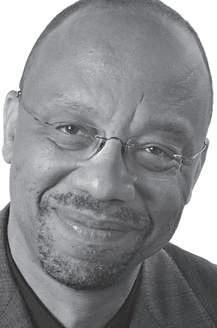
“I was conductor of the Underground Railroad for eight years,” she said later in life, “and I can say what most conductors can’t say – I never ran my train off the track and I never lost a passenger.”
During the Civil War, she guided a team of Union scouts operating in the marshlands near present-day Beaufort, South Carolina. In 1863, she led a raid on plantations along the Combahee River that freed more than 750 slaves –becoming, apparently, the first woman to lead U.S. troops in an armed assault.
Later in life, she worked alongside Susan B. Anthony and others in the crusade for women’s suffrage. She died in 1913, frail yet still unbowed, having lived one of the greatest of American lives.
Unceasing struggle has expanded the meaning of “we
By Jeff Smith Guest columnist
The Scottish author Laura Marney once wrote that “no matter who you are or where you are, instinct tells you to go home.”
Nothing reinforces that instinct quite like spending time in prison.
Over Memorial Day, my family and I will go home to St. Louis where I’ll begin work for Concordance Academy, a new nonprofit that will help formerly incarcerated people successfully re-enter the community. Led by ex-Wells Fargo Advisers CEO Danny Ludeman, Concordance Academy works with its sister group, the Washington University-based Concordance Institute for Advancing Social Justice, to create a holistic re-entry model that can slash recidivism rates first in the St. Louis region, and later, nationally.
Concordance’s two arms – one focused on direct service, the other on research – aim to ignite a researchdriven, real-time feedback loop that provides effective interventions for returning citizens and disseminates best practices. Its innovative approach has already drawn significant support and will
begin working inside Missouri prisons in June. I’m so grateful to The New School for hiring me 5 years ago to a position for which I applied from a halfway house. I left prison with every advantage relative to most guys with whom I served: I had a place to live; broad community and family support; savings to fall back on; and a world-class education.

I’d suffered no lasting physical or psychological trauma in prison. I was white. That I was offered a real second chance was an exception. Every year 650,000 Americans leave prison with a bus ticket and $10 for a hot meal. They land on the doorsteps of the same communities where they’ve already failed – only this time, they bear the added stigma of a prison record. Due largely to employer and landlord resistance, most won’t find gainful employment and many will become homeless; threequarters will re-offend within a few years.
This Mother’s Day, we celebrate the life-giving power of mothers and are reminded of the joyous event of giving birth, an event that is celebrated by friends and family – and an event that can give hope to many other people through the donation of umbilical cord blood.
Thousands of patients battling blood cancers like leukemia and lymphoma, and other life-threatening diseases treatable by a cord blood transplant depend on the generosity of mothers who choose to donate their babies’ cord blood. But more donations are needed, especially from African-American and Asian communities, as patients within these communities have the hardest time finding donor matches.
the people,” once reserved for white men only. As our understanding of freedom and equality has changed, so has our reading of the nation’s history. In fighting for the rights of African Americans and women, Tubman risked her life for the highest of American ideals. Her example ennobles us all.
As for Jackson, history has been less kind. He was a major slave owner, of course, like so many of our early presidents. If that alone were enough to get a president booted from our money, we’d have no dollar bills, no nickels and no quarters. Of course we should keep George Washington and Thomas Jefferson around, understanding their flaws while celebrating their greatness.
But Jackson also initiated the forced migration of thousands of Native Americans from the Southeast to the West, an exodus called the “Trail of Tears” that can only be described as genocidal. He knew that many Indians would die along the way – just as Southern plantation owners, New York financiers and other supporters of slavery knew that keeping human beings in bondage was wrong.
Still, Jackson did win the Battle of New Orleans; if he hadn’t, the young nation might not have survived the War of 1812. I say let’s put him on the $2 bill, if anybody can find one.
Eugene Robinson’s email address is eugenerobinson@ washpost.com.
There is no cost to donate and the procedure is safe for moms and babies. Cord blood is collected immediately after birth and does not change the labor or delivery. Donated cord blood that meets the requirements can be listed on the Be The Match Registry® and made available to anyone who needs a cord blood transplant.
The St. Louis Cord Blood Bank has received donations from over 180,000 births since the program started in 1996, and has provided almost 2,700 donations to adults and children all over the world.
If you’re expecting a baby in the coming months, I hope you’ll visit BeTheMatch.org/ cord or contact St. Louis Cord Blood Bank at (314) 2682787or http://www.slcbb.org/ for more information. You
could bring new life into the world – twice in one day.
Kathy
Mueckl, nurse coordinator St. Louis
Caution when it comes to the unknown is normal. Investing in something based theory and promises can be scary. However, once it’s proven to be a good decision and a wise investment, it is no longer unknown; it is no longer theory and promises. This is when those who were unsure should jump in and improve themselves.
The results are in on Medicaid expansion. Other states’ experiences have shown that expanding Medicaid was a good decision. States such as Arkansas and Kentucky have seen increased revenues, lower costs and economic improvement as a result of Medicaid expansion.
Without accepting federal dollars to support the 260,000 Missourians in the gap, the state loses on average $5 million dollars a day; providing health coverage would save Missouri approximately $1 billion by the year 2022. It is no longer scary or unknown, theory and promises. There is evidence that expanding Medicaid is a wise decision.
What makes it even better is that Missouri has not lost the chance for three years of 100 percent federal funding for the expansion if they act now!
The results are in; it is time to expand Medicaid in Missouri.
Lynley Closson St. Louis
As I saw first-hand and describe in “Mr. Smith Goes to Prison,” the prison experience itself can be criminogenic. And as I learned while researching the book, the patchwork of programs in place to help people succeed is poorly funded and mostly ineffective. While I’ve loved NYC and teaching at The New School, I’m pursuing this because I don’t want to be an exception. I want others leaving prison to get the same type of opportunity The New School gave me, and Concordance will make that a reality for thousands of people – starting in St. Louis, where my heart has never left.
I’ll be leading Concordance’s public policy and community engagement efforts. If you’d like to help in any way – if you’re a policymaker interested in reform; a volunteer interested in direct service; a journalist interested in covering Concordance’s unique approach; a donor interested in giving – please let me know. Starting June 1, my contact information will be jsmith@ concordanceacademy.com. Jeff Smith is a former Missouri state senator, an ex-offender and the author of “Mr. Smith Goes to Prison.”
Eating sustainably
With the 47th annual observance of Earth Day just around the corner, this is a great time to explore more effective ways of slowing climate change and conserving Earth’s natural resources for future generations.
A 2010 UN report charged animal agriculture with 19 percent of man-made greenhouse gases – more than all transport – and recommended a global shift to a vegan diet. A subsequent World Watch study placed that contribution closer to 50 percent. Meat and dairy production also dumps more water pollutants than all other human activities combined. It is the driving force in global deforestation and wildlife habitat destruction.
Last fall, England’s prestigious Chatham House declared that reducing meat consumption is critical to achieving global climate goals. A report from Oxford University found that global adoption of a vegan diet would reduce greenhouse emissions by two thirds. The 2015 U.S. Dietary Guidelines Advisory Committee has recommended reduced meat consumption and an environmentally sustainable diet.
Just as we replace fossil fuels by sustainable energy sources such as wind and solar, we must replace animal foods with the more sustainable vegetables, fruits, and grains. Being mindful of this can help us make better choices at the supermarket.
Sal Mahoney St. Louis



Diverse Business Partner before the game on April 15. Accepting the award from the newspaper were Wiley Price, Robin Britt, Ishmael Sistrunk, Mary Easter and Kevin Jones.
Every baby born in St. Louis County will now receive a St. Louis County Library card thanks to the Born to Read program. Born to Read provides new parents at area hospitals with a bag containing a book, a toy, information about infant development and a library card. Parents also receive an invitation to celebrate their child’s first birthday at the library where they will receive another free book. Support from the Cardinals Care, Aetna and Great Southern Bank has allowed SLCL to expand the program to include 17 area hospitals and clinics. Participating hospitals include: St. Anthony’s Medical Center, SSM DePaul Health Center, St. Clare Health Center, Missouri Baptist Medical Center, SSM St. Mary’s Health Center, St. Luke’s and Mercy clinics.
The Born to Read program was launched in 2015 with support from the St. Louis County Library Foundation. Over 15,000 families are expected to receive a Born to Read bag in 2016. More info about early literacy resources at SLCL can be found at www.slcl.org/early-literacy
Floods are the most common and most costly natural disaster. The Metropolitan St. Louis Sewer District (MSD) is reminding residents in its service area of the impacts of flooding with its annual Know Your Zone initiative to increase enrollment in the National Flood Insurance Program and overall flood zone awareness. St. Louis residents can go to KnowYourZone.org to determine the level of flood zone they live in and find out more about how to purchase flood insurance through the National Flood Insurance Program. KnowYourZone.org also has more information about preferred risk insurance policies for residents in moderateto-low risk flood zone areas and options for obtaining flood insurance through current homeowners, renters or other insurance policies.
For information, flood zone maps, and tips on how you can protect your home go to KnowYourZone.org.

By Christi Griffin Guest columnist
Fifty years ago, when Caroline Fisher, a Missouri pioneer in education, taught at Benjamin Banneker School, the opposite side of Lucas was lined with tenements. Dilapidated townhomes spoke of generations of abject poverty. The children who filled their tattered walls also filled classrooms across the street. They walked to the corner store.
The tenements have now been razed. New homes stand in their stead. The children, however, are bussed. Banneker, a school named for the African American who designed Washington, D.C., is shuttered. Its mid-century structure shows years of neglect; its halls are emptied by bussing.

The corner store is now a vacant lot.
This month, six parents traveled from St. Louis to the National Civil Rights Museum to film the 17th session of “Mother 2 Mother” for PBS. In this case, “Parent 2 Parent” is a conversation of black parents to whites about “the talk” they have with their sons. It’s a “talk” that belies the ongoing signs of racial injustice and oppression, an effort to address the school-to-prison pipeline that begins with our very young. Like the demise of Banneker School, change is not always good.
In the 1960s, before the mandate to desegregate schools crept toward fruition, Banneker was bustling with children and educators dedicated to their success. In the ‘60s, before the wealthy envisioned profits from building public housing in inner cities and bussing black children to all-white schools, there were no metal detectors, no in-school resource officers, no uniformed police.
n Hours after Ida Woolfolk passed, so did my mother, Caroline Fisher – two pillars who dedicated their lives to educating students of the St. Louis Public Schools.
At 91, Caroline Fisher lived to witness reading problems turn to social ills. She saw the principal’s bench turn into a holding cell and parents go from partners to prisoners. In her 41 years of teaching, she had never seen a student arrested, carry a gun or kill another student. But drugs and injustice yielded a generation of babies affected by crack and private prisons reel in more parents than the school’s PTA. Over the last 50 years we’ve forced teachers to be more than educators. We’ve cowered at the propaganda of drugs and crime and often cheered while our sons were carted off. We’ve stood by while our homes and communities were ravaged by the very gatekeepers who scared us. And in the interest of integrating schools, we’ve let our children and school funding get shipped to the very people who ran away in white flight.
Hours after Ida Woolfolk passed last month, so did my mother, Caroline Fisher. Two pillars who dedicated their lives to educating and elevating students of the St. Louis Public Schools were gone. They inspired their students to make a difference in this world.
Their efforts, like those of so many educators, are too often outweighed by the social ills of a very broken town. If things are to change for the better, it’s up to us to assure Caroline and Ida’s expansive legacies live on.
The life of Caroline Stubblefield Fisher will be celebrated at a Memorial Mass and Service 11 a.m. Saturday, April 30 at St. Elizabeth Catholic Church. 4330 Shreve.
Christi Griffin is the founder of The Ethics Project, a non-profit organization addressing the impact of crime, injustice and incarcerations, and the author of “Incarcerations in Black and White: The Subjugation of Black America.”

Continued from A1
Rev. Scott alluded to a man who had come to the gathering and paced in front of Scruggs’ photo, looking distraught, before taking off.
“An uncle came down,” Rev. Scott said. “He couldn’t even stay because he’s in so much pain. This is our pain. A mother is hurting somewhere. Siblings are hurting somewhere.”
Beverly Jones, a St. Louis resident, hugged a friend as tears rolled down her cheeks. She pointed out the economic disparities that plague the region.
“If the economic conditions were a level playing field, we wouldn’t have to worry about this young man being in a stolen car because he would know that by the time he turns
Continued from A1
for use by the Pruitt-Igoe site.”
According to the Missouri Department of Economic Development, the Brownfield tax credit is designed to by police. We’re sick and tired of having to come together and deal with the same thing over and over and over and over and over here in the St. Louis region.”

18, he can get one of those –because the opportunity would be there,” Jones said. “See, we have to look at this as a broad spectrum. Not just a murder in the street. There’s a reason why our kids do what they do. Because you have not leveled the playing field.”
provide “financial incentives for the redevelopment of commercial/industrial sites that are contaminated with hazardous substances and have been abandoned or underutilized for at least three years.” The Pruitt-Igoe site is contaminated with asbestos and – reportedly – radiation from
Rabbi Susan Talve of Central Reform Congregation placed her hand alongside Scruggs’ photo as she spoke.
“We need to grow a generation that sees a future,” she said. “Not a generation that doesn’t think they matter, doesn’t think that they have a
covert U.S. Army experiments.
It has been abandoned for 40 years. “The Pruitt-Igoe site falls well within” the stated purpose of the tax credit, Nasheed wrote, “and I ask you to take immediate action to expedite the use of the Brownfield Remediation Tax Credit

future. We have to lament the future that this young man lost. And maybe didn’t even think that he had.”
Rabbi Talve recalled the words of Syreeta Myers, mother of VonDerrit Myers Jr., whose 18-year-old son was killed by an off-duty St. Louis
program to clean up the site.”
According to an estimate by Lafser & Associates, it will cost nearly $17 million to remediate the site.
The Pruitt-Igoe footprint was included in the original proposal to the National Geospatial-Intelligence Agency (NGA) for its new $1.6 billion Western Headquarters that was submitted by developers
Continued from A1
and that came first,” she said. “They supported that wholeheartedly.”
Since then, Coleman has seen numerous families work through crisis situations by calling BHR’s 24-hour hotline and meeting with their outreach clinical team. Many of them, like her, were caring for sick family members or grieving the loss of loved ones.
In her almost 20 years at BHR, Coleman has served in numerous leadership roles.
And in 2012, Coleman was named as BHR’s president
police officer in 2014.
“I heard Syreeta say once that VonDerrit wasn’t perfect, but he deserved to grow up,” Rabbi Talve said. “How many of our kids make mistakes?”
Myron Winston, who works in the area, volunteered to light a candle in honor of Scruggs.
“I saw that young man running for his life and shot in the back,” Winston said.
“This is not my first vigil. This is not my first time standing in an alley mourning a black life. And what’s happening around here is there is no regard for humanity.”
Winston also brought up the stray bullets that went into homes and cars as the officer shot at Scruggs – something that raised concerns and incensed neighbors.
“Whatever happened that caused this encounter – was it really worth risking bullets in this neighborhood?” asked Rev. Traci Blackmon of Christ the King United Church of Christ.
“Was it worth the little kids that could’ve been playing in their yard … and could’ve been hit by a stray bullet? Was it really worth that? Is a car
Paul McKee Jr. of NorthSide Regeneration, who controls the site, and Bob Clark of ClayCo.
In the end, the NGA drew the Pruitt-Igoe ground out of the site where it proposes to build its new Western Headquarters, though the contaminated land is adjacent.
worth that? Are there material possessions that are worth that kind of recklessness? We have to get outraged about the devaluing of life.” Between prayers and calls to action, the group sang together and comforted one another. A lit candle was placed on the exact spot Scruggs died, among dandelions in a backyard. Leaders closed the vigil with a call to action by Rev. Karen Anderson of Ward Chapel AME Church.
“You have the right not to remain silent. We have the right to lift our voices in protest. We have the right to cry out in lament. We have the right to cry out in disgust at a system that proclaims that we are all free and equal and we are not,” Rev. Anderson said.
“Build relationships with folks that don’t look like you. That don’t act like you, that don’t think like you, that don’t worship like you …That’s how we change things. Put aside our differences. And understand that my child is as valuable as anybody else’s.”
Reprinted with permission from news.stlpublicradio.org
The Belleville NewsDemocrat – which editorialized in favor of the NGA choosing a rival site in St.
and CEO. Through its crisisintervention system, BHR provides 24-hour access to mental health services to the residents of the City of St. Louis and the counties of St. Louis, St. Charles, Franklin, Jefferson, Lincoln, Warren, Iron, St. Francois and Washington.
“The core of me is helping people, and therefore I ended up at BHR because of that,” she said. “It has given me such a rich career. In this organization, we really do save lives. There is no health without mental health.”
When Coleman started with BHR, it was only three years old and still establishing itself, she said. Now BHR receives 28,000 crisis calls
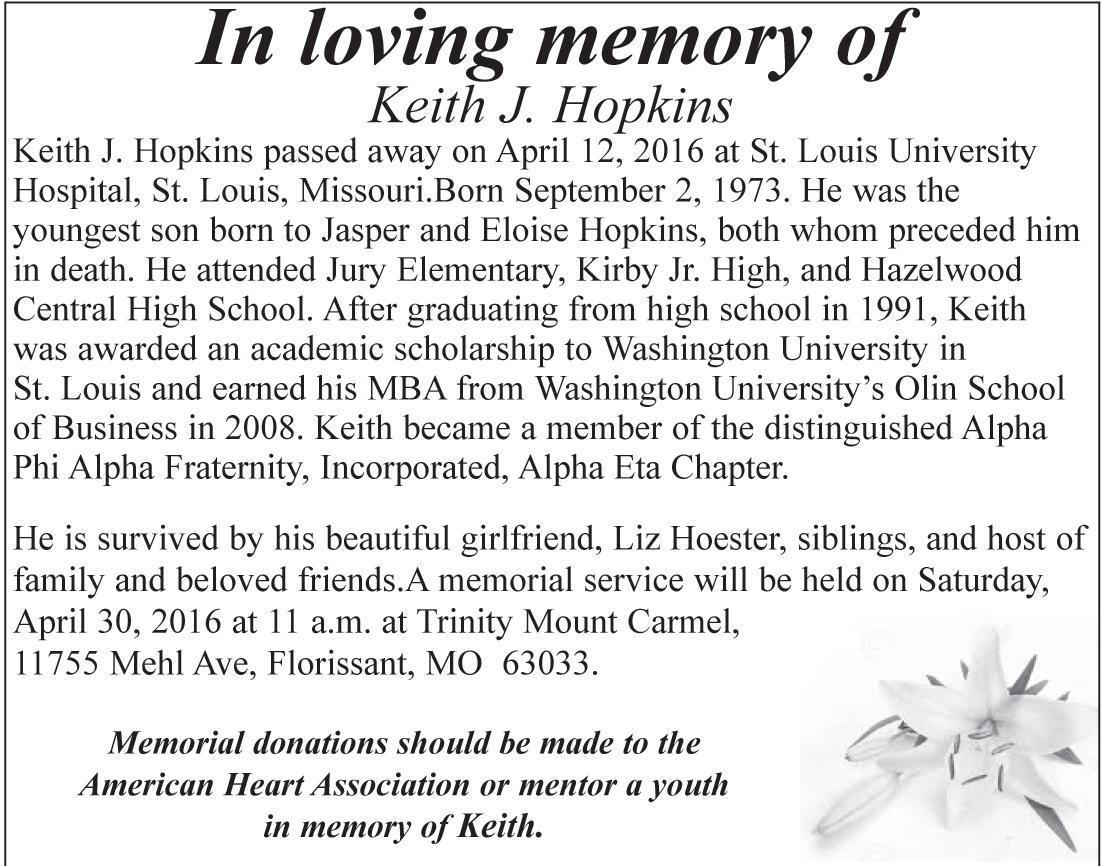

County, Illinois – surmises that the NGA excluded this ground because of its toxic pollution and continues to argue that the North St. Louis site is unsafe for the federal agency because of the adjacent toxicity. The NGA has a public review period for its decision until May 2.
per month has 150 employees – 129 of those being crisisintervention clinicians.
“Our impact is huge,” she said. “We are making an impact saving lives because we are diverting people from the hospital. We are 24/7, and there are no barriers to our services.”
Coleman’s educational roots are one of her defining traits, she said.
“I’m a product of the St. Louis Public Schools, so all of my education happened in St. Louis,” she said.
As a single parent, she raised two sons while working fulltime and going to school part-time through evening classes. On that rigorous schedule, she earned her MBA from Fontbonne University and her bachelor’s from Saint Louis University. Growing up in the African-American community in St. Louis, she said she always felt mental health was taboo.
“So now that I’m able to work at this organization, I’m a total advocate for it,” she said. “I’m trying to educate the community, but especially our community, that it is really is okay – that you can be healthy and this is nothing to be ashamed of.”
In December 2012 the first day of her job as CEO at BHR, she participated in a delegation to Cuba with the focus on epidemiology of substance use and mental health disorders. She was honored in November 2012 with the distinguished Excellence in Business Award from the St. Louis American Foundation, followed by Black Enterprise Magazine’s People on the Move designation.
This past January, Coleman became adjunct professor for Washington University’s Brown School of Social Work.
After one of her classes at WUSTL, a woman approached her.
“She told me that BHR saved her life,” Coleman said. The woman’s mother and father passed away within months of each other, she said. “She was dealing with grief, and it put her in state of depression,” Coleman said.
Those kinds of comments are not unusual to hear, she said, and that confirms to her that she’s working at the right place.
“I am passionate about this work,” she said. “Growth to me is serving more people. We are going to serve as many people as we can serve. Teamwork is very important to me. And the team that I work with, we wouldn’t be able to without them.”
Continued from A1
The joint motion stems from the desegregation tax, a 2/3cent sales tax which city voters passed in 1999 to support desegregation efforts in SLPS.
The tax was also a requirement of the federal court’s order to settle the 1972 segregation lawsuit filed by five AfricanAmerican parents in North St. Louis. The parents also brought the proceeding as a motion in the pending case.
Charter schools – which now educate one-third of the city’s public school children – did not exist at the time, so they were not included in the funding requirements outlined in the 1999 federal settlement.
The April 11 motion claims that in 2006, state legislators revised the state’s funding formula to require some of the desegregation tax revenues to be “improperly diverted” to St. Louis charter schools.
It also claims since the 20062007 school year, $42.5 million have been allocated to charter schools that “rightfully belonged” to SLPS.
The legislators’ 2006 revision went against the federal court order and the voters’ intention for that money to go directly to SLPS, said Adolphus Pruitt, president of the St. Louis City NAACP (which is also a plaintiff in the lawsuit).
“While the timing of the public announcement of the motion being filed on the heels of the successful passage of Proposition 1 is unfortunate, the actual legal proceedings have been in motion for quite some time,” the SAB members said in an April 22 statement. However, some charter school supporters said the SAB’s action is a direct attack against them.
“What’s the best way for the district to get more money?” said Paul Brown, an attorney with Thompson Coburn and a board member on the Lafayette Preparatory School Board. “That’s to eliminate the
charter schools. They know what they are doing.” Brown said the elimination would come in two ways. The 2006 state law reads that if charter schools are overpaid, they must pay back the amount within 12 months the following year. Lafayette Preparatory, which was founded three years ago, received about $92,000 from the tax just in the 2015-16 school year, according to the Missouri Charter Public School Association. Add up the last 10 years, and most charters would not be able to come up with that money in 12 months, he said, forcing them to close. Also, charter schools have small legal budgets. “If they want to be heard in that lawsuit, they would have to file court proceeding to convince the court that the district is wrong,” Brown said. “They can’t afford that, and the district knows this.”
Rick Sullivan, president and CEO of the SAB, told The American that they were “caught off-guard” by these kind of responses. “It was never a thought or an idea of the SAB to damage or harm the charter schools,” Sullivan said.
The SAB members were not aware of the 12-month timeline in the state law, Sullivan said. They are merely righting a wrong in the settlement agreement, he said, and putting the desegregation tax revenue back into the hands of SLPS were it should be. If the court sided with the SAB, Sullivan said, they would be open to resolving the matter without harming charter schools.
The SLPS Foundation, which is not a party in the lawsuit, has received some backlash from its funders, said Jane Donahue, the foundation’s president. Their funders are committed to all children in both SLPS and charter schools, she said. Some funders are “reconsidering” their donations, she said.
“I really think this community has the brain power and the heart to come to a conclusion that benefits all kids, especially low-income kids,” Donahue said. “The way
the conversation started is the not the way we want it to end.”
Mike Wolff, dean of the Saint Louis University School of Law, assisted in drafting the 1998 Senate Bill 781, which outlined the state’s obligations in the desegregation agreement and also established charter schools. He was special counsel to Governor Mel Carnahan at the time.
Looking at the new motion, he said, the district’s argument that the sales tax was intended just for SLPS is “historically wrong and legally incorrect.”
“The sales tax was passed to augment the property tax and is available to each child who resides in the district, whether she attends an SLPS school, a public school in another district, or a charter school,” Wolff said. “All are public schools in that they are supported by taxpayers of the state and the district.”
that her children were being bussed to schools far from their neighborhood.
It took until 1999 for the federal court to accept a settlement agreement to close the case. As part of this, the city board agreed to provide all-day kindergarten, summer school, college prep and preschool programs and magnet schools. It also had to meet standards for class sizes, teachers and academic improvement.
n “If we wanted our kids in St. Louis Public Schools, they wouldn’t be in the charter schools.”
– John House III
He also said that the real issue that should be raised is inadequate funding for public schools.
“Legislators who have defined ‘adequacy’ cannot bring themselves to fund even their pathetic amount of ‘adequacy’ for public education, and every school district in the state receives less than it should,” Wolff said. “That is the root of the problem, not the alleged diversion of resources to charter schools.”
Funding formula
It’s impossible to talk about this issue without remembering how the desegregation tax began – along with the complicated details of the state’s funding formula for school districts.
In 1972, an AfricanAmerican mother, Minnie Liddell, led a class-action lawsuit against the city school board and the state, frustrated

To fund these efforts, U.S. District Judge Stephen Limbaugh approved a funding formula where the city board would receive a minimum of $60 million between state aid and the desegregation tax.
Senate Bill 781 was a big piece of this. In the 1998 bill, Wolff said, the legislature wanted to increase the amount of state aid that SLPS could draw under the state’s Foundation Formula, in order to replace the money that would go away after the federal court exited the Liddell desegregation case.
At that time, the state determined its aid by how much “local effort” was put forth in district property taxes – the higher the local property tax rate, the higher the amount of state aid.
“The legislators knew that it would be impossible to get an increase in local property taxes, so the legislature put in a provision allowing SLPS to choose a sales tax,” Wolff said.
It was the first time any Missouri school district used sales tax as part of the funding equation, and it remains unique. The amount raised by the sales tax would be “converted” to an equivalent amount of property tax rate, that way SLPS could increase its entitlement under the formula, he said.
That same 1998 legislation also authorized charter schools. The charter provision gained
the necessary Republican support for the bill to pass. The law states that charter schools would receive an amount equal to the state aid plus local taxes for each pupil – the same as for SLPS.
“What is also crucial to understanding this structure is that charter school students are public school students,” Wolff said. “The public money follows the child, whether she chooses to attend a charter school, a SLPS school or transfers under the SB 781-authorized extension of the interdistrict transfer program.”
In 2006, the legislature changed the formula in Senate Bill 287 so that the amount of local taxes raised no longer equates to more state funding. Every district gets the same amount per student, and “the districts can be as disparate as their tax-base wealth will allow,” he said.
Wolff said the real issue is that the change in the formula left school districts with an inadequate amount of funding.
“This leaves SLPS and other districts scrambling to get as many local resources as they can get,” he said.
‘Spirit of the law’
John House III, a North St. Louis resident, said he applied for all three of his children to participate in the school transfer program, called the Voluntary Interdistrict Choice Corporation (VICC) program, so his students could attend a St. Louis County school. None of his children got in because all the slots were filled. About 4,500 city students participate in the VICC transfer program currently.
House said it was the same with SLPS magnet schools. “You’ll end up on a waiting list and be number 87 on the list,” he said. “There’s no way they are getting in.”
Both the VICC program and the magnet schools were required as part of the Liddell lawsuit settlement. If it weren’t for charter schools, House said, he would have no choice in his children’s education. His now
17-year-old daughter was a founding member at the city’s first KIPP charter school, and he has two children still at KIPP schools.
“Most schools that have a strong curriculum are either way out in the county or too expensive to attend,” House said. “When you can get a school like that in the city that’s actually free, that’s tremendous.”
When House heard about the SAB’s recent action, he felt like SLPS was trying to “force his hand” by bankrupting the charter schools.
“If we wanted our kids in St. Louis Public Schools, they wouldn’t be in the charter schools,” he said. “Just because you live in the city, doesn’t mean you don’t expect more for your family and kids.”
House said they can’t afford to put three children in private school, so he is hoping the district drops the motion.
“The spirit of the law was to work towards desegregation, and charters came out of that,” said Christie Huck, founder and executive director of City Garden Montessori School. Huck, a mother of two boys in the Shaw neighborhood, established the school because she wanted her children to attend a diverse, highperforming school near her home.
“We are committed to everything outlined in the settlement agreement and take that very seriously,” Huck said. In 2015-16, there were 35 charter schools in the city. Doug Thaman, executive director of the Missouri Charter Public School Association, said that their families have been leading the charge at ensuring diversity, and 70 percent of children in charter schools are AfricanAmerican.
“These are children, they are not zip codes,” Thalman said. “We believe that was the spirit of the desegregation settlement. It’s something charter public schools can do.” Follow this reporter on Twitter @rebeccarivas.


St. Louis Convention and Visitors Commission

Freedom Crossing Celebration set for May 7
By Kiara Bryant
For the St. Louis American
Mark your calendars for May 7, when the 14th Annual Mary Meachum Freedom Crossing Celebration will take place from 11 a.m. to 6 p.m. at Missouri’s first nationally recognized Underground Railroad site (4500 E. Prairie Ave.). Mary Meachum, a free woman of color and the widow of John Berry Meachum, spearheaded efforts in education. Mary Meachum took a stand against slavery and used her home as a depot of the Underground Railroad. In 1855, she was arrested for aiding in the attempted escape of nine slaves across the Mississippi River to freedom in Illinois. Hence the site is now named in her honor.
This year’s theme for the Mary Meachum Freedom Crossing Celebration is “Beginnings of a Brave New World.” The year is 1866, and the Civil War has ended. Filled with the promise of freedom and selfdetermination, we see the rise of black cultural institutions, education, churches and the Buffalo Soldiers.
Troop (USCT) understood the importance of education and gave their mustering out pay to their white commander to purchase land for the purpose of creating a Normal school (teacher’s college) which would become Lincoln Institute (or Lincoln University). This year Lincoln University celebrates its 150th anniversary. Lincoln University is also the oldest, most prestigious and continually operating historically black college and university west of the Mississippi River.
n On May 7, you may take part in reenactment activities such as the recruitment of the Buffalo Soldiers.
After the Civil War, Congress established the “The Army Reorganization Act of 1866.” This law called for the formation of four black infantry and two black cavalry regiments. The 24th and 25th infantry, the 9th and 10th cavalry would be known as “the Buffalo Soldiers.”
In 1866, black units not on duty in the south were sent to Jefferson Barracks. The Army recognized the need for training and educating of black men at this time. There was a strong recruitment presence in St. Louis and other northern cities because of the high level of literacy among the black population.
The newly freed of the 65th U.S. Colored
On May 7, you may take part in reenactment activities such as the recruitment of the Buffalo Soldiers. If you’ve ever wanted to be a Buffalo Solider here’s your chance as all men who want to train as a new recruit for the Buffalo Soldiers are invited to re-create the experience.
“It’s a fun window into 19th century black culture and history,” Angela da Silva, owner of the National Black Tourism Network.
Children can play 19th century games such as hoop rolling and create works of art. Experience what the Freedmen’s school was like during this time complete with slates and books. Eat foods of the African diaspora and dance as this event will conclude with “Barn dance,” featuring the “buck and wing” and other folk dances. Watch and listen as numerous church choirs and community singing groups compete for prizes and win by audience acclaim. For more details about this event, you can visit www. marymeachum.org or call (314) 865-0708.
Also save the date for entertainment, African marketplace, food, and a children’s village at the Annual St. Louis African Arts Festival on May 28-30 (Memorial Day Weekend) at World’s Fair Pavilion in Forest Park. For more events that will give you a glimpse of history and a world of experiences visit www.explorestouis.com.



A magnificent display of 51 carpets and two full-size tents highlighting some of the finest examples of long-lived weaving traditions is on view through May 8 at the Saint Louis Art Museum. These items were collected from the travels of James F. Ballard and are on display in the Museum’s current exhibition, The Carpet and the Connoisseur: The James F. Ballard collection of Oriental Rugs. Ballard (1851 – 1931), a prominent St. Louis businessman amassed a fortune from various operations with the most notable being the sale and distribution of Campho-Phenique.
Ballard became of the country’s top collectors of oriental carpets at the turn of the 20th century, traveling the world collecting carpets mostly from areas in Turkey. He ultimately divided his collection of carpets between the Saint Louis Art Museum and The Metropolitan Museum of Art in New York. As a result of gifts of from the Ballard collection, the Museum has 110 Ballard rugs in its collection. Two of my personal favorites on view are the 19th century pleasure tents that were used for outdoor gatherings. Until recently, they were the only examples of such works in American museums.
Visit the Saint Louis Art Museum Admission to the Museum is Free Every Day Tuesday–Sunday, 10:00 am–5:00 pm Friday, 10:00 am–9:00 pm Closed Monday
Admission to the Main Exhibition Always Free on Friday, 10:00 am–9:00 pm
Admission to The Farrell Auditorium Advanced tickets for this free auditorium program are required. Tickets are available in person at the Museum’s Information Centers or through MetroTix online or by phone at 314.534.1111. Free tickets reserved through MetroTix incur a $3 service charge; this service charge is waived for tickets reserved in person at the Museum during regular hours.
Family Sunday Programs 1:00 pm – 4:00 pm Travel from Egypt to New Zealand with hands-on art activities and lively 30-minute family-friendly gallery tours at 2:30 pm, every Sunday.
SLAM Underground 6:00 pm – 9:00 pm
Children and adults can explore the world of carpet weaving in the Museum’s Explore Lab, an interactive center that includes an actual loom of a rug in progress. Visitors also can learn about the weaving process step-by-step through images, tools, and materials, including goat and sheep wool and spun and unspun wool. Before leaving the Explore Lab visitors can create their own bookmark inspired by the Oriental rugs in the Ballard Collection.

This is a little headache of a story about elections and politics.
On April 24 – that’s a Sunday, when the U.S. Post Office doesn’t work, so a strange date to stamp a letter –Esther Haywood, president of the St. Louis County chapter of the NAACP, addressed a letter to County Executive Steve Stenger regarding the April 5 municipal election in St. Louis County. In that election (though Heywood is not nearly this precise in her letter), voters at 60 polling places were turned away due to ballot shortages. Without directly calling for the termination of Eric Fey, the Democratic elections director for the county, Haywood writes that his two-week suspension without pay imposed by the
election board “is not adequate, in light of the termination of former Director Rita Heard Days for an offense that was significantly less serious.”
Though Haywood doesn’t tell Stenger what they both know, Days also is significantly less white than Fey. State Rep. Shamed Dogan (R-Ballwin) is among many who have surmised publicly that if Fey were black he’d also be unemployed by now. Using the passive voice, Haywood writes that the County NAACP “is also requesting that a bi-partisan and independent group be formed” to investigate the April 5 election snafu “and make recommendations for how to improve elections in St. Louis County.” Since she is writing this to Stenger, presumably she

is calling upon him to form this group that she thinks should be formed. She continues, “Although you are not the chief election official of our state, your office funds elections in St. Louis County.” Presumably, the argument is that Stenger should try to fix this mess since he is paying for it.
The American obtained a copy of this letter on April 26, after it already had been reported by other media. On that day, a representative from the County NAACP said that Stenger had not yet responded. The American asked a spokesman for the county executive whether Stenger had a response, and then assured the County NAACP that they would be hearing from Stenger. Indeed, shortly thereafter Stenger’s spokesman told The American they had just mailed a response to Haywood and would share the text of the letter after she had received it. There are silly and outrageous aspects to this little episode.

Esther Haywood, president of the St. Louis County chapter of the NAACP
For one, Haywood writes as if she is oblivious to the fact that “the chief election official of our state” – whom she recognizes is not Stenger – already has launched an independent investigation into the April 5 election. That official would be Secretary of State Jason Kander, who announced an investigation before polls had closed on April 5. Further, a House committee and a legislative
task force – both bi-partisan – already have launched their own investigations into the April 5 election and indeed already have conducted a public hearing. If Haywood is aware of any of these developments, you would never guess by her letter to Stenger. If she knows that three other independent investigations are already underway and still wants Stenger to start another one, then she has a baffling degree of confidence in Stenger’s independence and competence. What’s outrageous is how incredibly diffuse power is in this critical situation involving voter disenfranchisement in a Democratic stronghold during a presidential election year. When it comes to investigating the election, Haywood knows she is asking Stenger to do something he isn’t mandated to do, and suggesting that he should do it anyway since he is paying for election operations in the county. When it comes to a more “adequate” punishment for Fey, she doesn’t say what that should be or who should exact it. She writes to Stenger as if he sacked Days, a favorite of his predecessor Charlie Dooley, whom Stenger beat in the 2014 Democratic primary.
But Stenger has claimed repeatedly that he had nothing to do with Days’ dismissal, and he has plausible deniability on his side. Days was dismissed
by an election board that is appointed by the governor. But Haywood did not copy the election commissioners or Gov. Jay Nixon on her letter. Does she expect Stenger to put down her letter and call Nixon and the election commissioners and order them to fire Fey? If so, that’s a good one.
The American did contact Nixon through a spokesperson to remind him that there were multiple calls for Fey’s dismissal and to ask what conversation, if any, he had with his appointees on the election board. The spokesperson dodged the question.
“As you know, an independent, outside investigation is underway by Secretary of State Jason Kander’s Elections Integrity Unit,” Nixon’s spokesperson responded. “The governor has said repeatedly that the St. Louis County Board of Elections, and particularly its two directors, must rectify these mistakes, explain how they occurred, and be held accountable.”
It’s not clear that “be held accountable” in this statement is code for “get fired,” but it certainly serves that code function in the statement released by Missouri Legislative Black Caucus Chairman Brandon Ellington (D-Kansas City). He includes Republican elections director Gary Fuhr (also a white man, who has since tendered his resignation) in his call for accountability.
State Rep. Courtney Curtis (D-Ferguson), who chairs the Special Committee on Urban Issues that is conducting one of the three independent investigations into April 5, clearly wants Fey’s head. At the hearing in the Capitol on April 13 Curtis openly told Fey that he didn’t want to leave him “a way out.”
To be fair to Haywood, a former state representative who knows the game, the county executive has a tremendous amount of customary authority over who the governor appoints to the election board that oversees elections in the county, for which county government picks up the tab. But that is one of the infuriating aspects about the diffusion of power and authority in St. Louis County. Everyone who knows the system knows that Days lost her job because she lost Dooley’s protection when he was voted out. Everyone knows that Stenger must have at least approved, if not requested, Fey’s appointment. Yet by the letter of the law, Stenger can throw up his hands and claim it’s not his problem. Officially, it’s the governor’s problem, and he is waiting for the state’s chief election authority to conclude its investigation before he does anything about it. Meanwhile, we have two other independent investigations underway, and positively the last thing we need is for Stenger to start a fourth.
“Both Mr. Fey and Mr. Fuhr had an ample amount of time to gather the resources necessary to adequately prepare for this election,” Ellington stated. “Just as Rita Days, a black woman, was held accountable for her actions and removed from her position, these gentlemen should take responsibility and be held equally accountable as well.”



By Sandra Jordan Of The St. Louis American
Physicians and child health advocacy
organizations, including the March of Dimes, Spinal Bifida Association, the National Council of La Raza and the American Academy of Pediatrics mark a victory in the fight against birth defects
“Fortifying grains with folic acid has been a tremendously successful intervention in promoting healthier pregnancies and preventing birth defects.”
– American Academy of Pediatrics President Benard Dreyer, MD, FAAP
with the April 14 FDA decision to get corn masa harina flour fortified with folic acid to help prevent serious birth defects.
“Fortifying grains with folic acid has been a tremendously successful intervention in promoting healthier pregnancies and preventing birth defects, leading to a one-third decline in neural tube defects,” said American Academy of Pediatrics President Benard Dreyer, MD,

FAAP. Because of the FDA’s action, he said mothers and young children will be healthier and safer as a result.
Dr. Stephen Braddock, director of the division of Medical Genetics at Saint Louis University School of Medicine, said earlier studies have shown that providing additional folic acid/folate decreased the recurrence rate of spina bifida/neural tube defects by dramatic amounts.
“In 1992 the US Public Health Service recommended that all women who could potentially become pregnant should consume 400 micrograms of folic acid daily to prevent birth defects,” Braddock said. Folate, or Vitamin B9, is an essential vitamin not produced by the body. Folate in its natural form is found in foods, whereas folic acid is the synthetic supplement for folate.
n “In 1992 the US Public Health Service recommended that all women who could potentially become pregnant should consume 400 micrograms of folic acid daily to prevent birth defects.”
– Dr. Stephen Braddock
“By fortifying our flour/grains, one can assure that women of reproductive age will at least receive a minimum amount of folic acid,” Dr. Braddock explained. “As half of all pregnancies are unplanned and many women do not realize that they are pregnant until well after the neural tube closes (by 28 days post conception = 14 days post missed period). Fortification is necessary so that all children have the full benefit rather than relying on all of these women to take a daily supplement.”
For most U.S. residents of Mexican and Hispanic descent, corn tortillas are a staple food. Groups have been petitioning and commissioning new research to get fortification of corn masa flour products.
March of Dimes President Dr. Jennifer L. Howse said the decision represents a major victory for maternal and child health, especially in Hispanic communities.
See MASA, A11
Your Health Matters is provided in partnership with
By Cara James For The St. Louis American

Cara James n Five years ago, the Affordable Care Act established three additional offices of minority health within six HHS agencies.
Each April, in recognition of National Minority Health Month, we commemorate past achievements, acknowledge current efforts, and outline our continued journey towards health equity and equality for all. Fifty years ago, our journey included stops in Independence, Missouri where Medicare and Medicaid became law; in Selma and Montgomery, Alabama; and in Washington, D.C. for the signing of the Voting Rights Act and Civil Rights Act. Since then, there have been many more landmark achievements in health equity. Events such as the publication of the Secretary’s report on Black & Minority Health (the Heckler Report) and the creation of the HHS Office of Minority Health illustrate the increased national attention on the need to address health and health care disparities. The publication of the Agency for Healthcare Research and Quality’s annual National Healthcare Quality and Disparities Report illustrates our commitment to track our progress. The passage of the Affordable Care Act and the enrollment of millions of Americans, including many people of color in health plans, illustrate our continued advancement towards better care and healthier communities. Five years ago, the Affordable Care Act established three additional offices of minority health within six HHS agencies. The Office of Minority Health (OMH) at the Centers for Medicare & Medicaid Services (CMS) was an office newly established through the Affordable Care Act. The principal aim for CMS is better care, healthier people, and smarter spending. To help achieve this aim, the CMS Office of Minority Health ensures that the voices and needs of minority and underserved populations are present in the development, implementation, and evaluation of CMS programs and services.


Last week, The Missouri Department of Health and Senior Services confirmed a case of Zika virus in a pregnant Missouri woman who had travelled to Nicaragua, a known area of Zika transmission. This is the fourth confirmed case of Zika virus infection reported in a Missouri resident.
Nearly 80 percent of people infected with the virus will have no symptoms. Typically, symptoms are mild and include fever, rash, joint soreness and/ or redness of eyes.
Dr. Anne Schuchat, principal deputy director at the Centers for Disease Control and Prevention recently told reporters, “Everything we look at with this (Zika) virus seems to be a little scarier than we initially thought.”
She and Dr. Anthony Fauci, director of the National Institute for Allergy and Infectious Disease at the National Institutes of Health, said that they are discovering new information about the Zika virus daily.
Fauci said, “The more and more we learn, the more you get concerned about the scope of what this virus is doing.”
Experts now link the virus to premature birth, eye problems and other neurological conditions in babies born to mothers who were infected with Zika while pregnant, and there is reason for concern about Zika virus throughout the pregnancy.
The Missouri State Public Health Laboratory was designated as a Zika virus testing laboratory by the Center for Disease Control and Prevention (CDC).


The best prevention measure is to avoid mosquito bites in areas with ongoing transmission.
“Receiving this designation will improve our responsiveness to Missourians who are in need of answers and the health care providers who are
treating them,” said Missouri Department of Health and Senior Services Acting Director Peter Lyskowski. “During a response to a public
health concern like Zika virus, timely and accurate testing is of the utmost importance, and now our state public health laboratory can help provide that.”
Previously confirmed cases of Zika virus infection were reported in Missouri residents who travelled to other countries, including one pregnant
n According to the CDC, Zika virus also has the potential to be spread through unprotected sexual contact, through blood transfusion and an infected pregnant woman can pass Zika virus to her fetus during pregnancy.
woman. Currently, there is no vaccine for Zika virus. Researchers are a working toward beginning a clinical trial for a vaccine in September.
The best prevention measure is to avoid mosquito bites in areas with ongoing transmission. Ways to avoid mosquito bites while outdoors include wearing EPA-registered insect repellent with DEET, wearing pants and long sleeves, or remaining indoors in an air conditioned environment.
According to the CDC, Zika virus also has the potential to be spread through unprotected sexual contact, through blood transfusion and an infected pregnant woman can pass Zika virus to her fetus during pregnancy.
The CDC is recommending pregnant women avoid traveling to Zika-affected areas which include countries ranging from Mexico into the Caribbean, Central American and South America. For more information, visit http://www.cdc.gov/Zika/
The U.S. Preventive Services Task Force (USPSTF) recommends that people who are 50-69 years old, have increased risk of cardiovascular disease (CVD), and who are not at increased risk for bleeding, consider taking aspirin for primary prevention of CVD and colorectal cancer. The full recommendation and evidence reviews are published in Annals of Internal Medicine. The decision to initiate lowdose aspirin use for the primary prevention of CVD and colorectal cancer in adults aged 60 to 69 years who have a 10 percent or greater 10-year CVD risk should be an individual one with his or her doctor. Those who are not at increased risk for bleeding, have a life expectancy of at least 10 years, and are willing to take lowdose aspirin daily for at least 10
Continued from A10
“The FDA’s decision will prevent numerous cases of devastating birth defects like Spina Bifida,” Howse stated.
“The March of Dimes and our partners applaud the FDA for moving forward with this vital public health effort.”
In addition to reducing the incident of neural tube defects, reducing folic acid deficiency may have other health benefits.
“It is now believed that folic acid supplementation decreases the incidence of cleft lip and palate, congenital heart defects, and possibly premature delivery (and thus the many
n Benefits of regular aspirin use outweigh harms for some patients, including those at high risk for cardiovascular disease.
years are more likely to benefit. CVD and colorectal cancer are major causes of death for adults in the U.S. In fact, in 2011 over half of all deaths in the U.S. were caused by heart disease, cancer or stroke. Colorectal cancer is the third most commonly diagnosed cancer in men and women and a leading cause of cancer death. While taking low-dose aspirin daily can help prevent heart attacks, stroke and cancer, it also
medical morbidities associated with prematurity),” added Dr. Braddock, a pediatrician at Cardinal Glennon Children’s Hospital. “However, the data on these latter examples is still not as strong as that for neural tube defects.”
Gruma Corporation is the world´s largest producer of corn masa flours and tortillas. When the National Council of La Raza reached out Gruma to support folic acid fortification aimed at reducing risks of neural tube defects within Mexican and Hispanic populations living in the USA, the company immediately responded favorably.
“Latinos are disproportionately affected by Spina Bifida and other neural tube defects.
increases the risk of serious harms, particularly risk of bleeding in the stomach and intestines, and strokes caused by bleeding in the brain.
The Task Force looked at the combined benefits and harms of taking aspirin for the primary prevention of both cardiovascular disease and colorectal cancer in this recommendation.
More research is needed to assess whether taking aspirin is beneficial for people who are younger than 50 or 70 years and older.
The U.S. Preventive Services Task Force (USPSTF) concluded that the benefits of regular aspirin use for the primary prevention of cardiovascular disease (CVD) and colorectal cancer can outweigh the bleeding risks for some patients, including those with higher risk for CVD.
The scientific evidence that the major cause of this disparity is the absence of fortification of corn flour products is convincing,” stated Charles Kamasaki, senior cabinet advisor at NCLR. Rates of neural tube defects vary by racial and ethnic background. For example, Spina Bifida affects 2.73 per 10,000 live births among non-Hispanic blacks or African-Americans, 3.09 per 10,000 live births among whites, and 3.80 per 10,000 live births among Hispanics.
In many other nations where corn masa flour is a major part of the diet, governments have encouraged and endorsed fortification with folic acid to reduce neural tube defects.

Continued from A10
We are dedicated to working on behalf of all CMS beneficiaries, while strategically focusing on racial and ethnic minorities, individuals with disabilities, and sexual and gender minorities. CMS OMH activities include: From Coverage to Care , the CMS Equity Plan for Improving Quality in Medicare, strengthening CMS data collection and analysis, and working across the agency to embed a focus on health equity into new and existing programs and policies. Last month, CMS OMH launched an interactive web based tool for mapping

Medicare disparities. The Mapping Medicare Disparities Tool contains health outcome measures for disease prevalence, costs, and hospitalization for 18 specific chronic conditions, emergency department utilization, readmissions rates, mortality and preventable hospitalizations. We know we cannot achieve health equity on our own. It will take the support of partners from the federal to the community level. We encourage you to join us on the path to health equity by using the resources discussed … and of course building on your own health equity activities!
Cara James is director of the Office of Minority Health Centers for Medicaid and Medicare


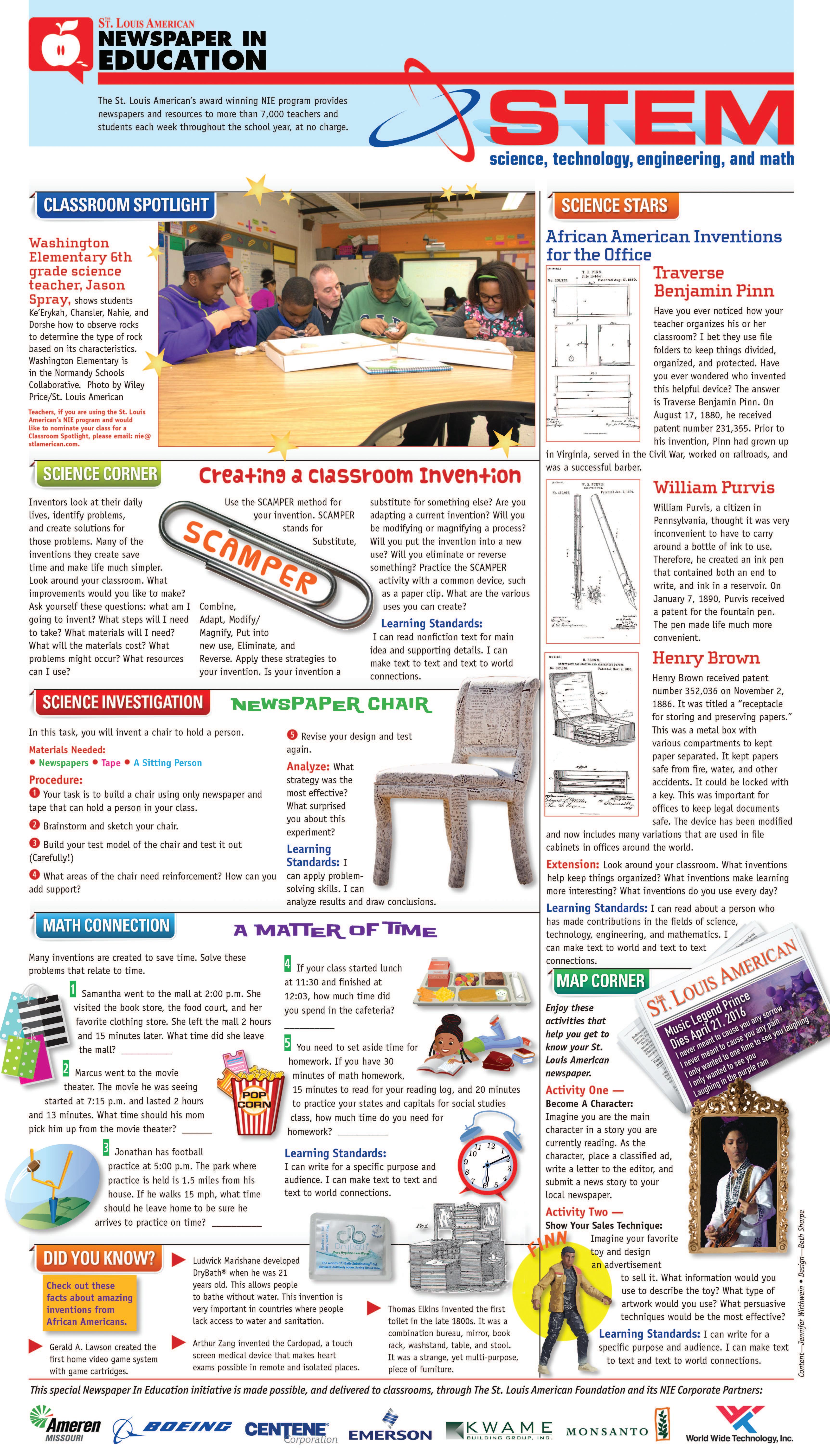


By Chris King Of The St. Louis American
“We are not a trusted source,” Jennifer Leach, assistant director of the Federal Trade Commission’s Division of Consumer and Business Education, told a gathering of ethnic media representatives in St. Louis on April 20. “We wanted to have this conversation with you to let you know we are here and we have resources.”
The Federal Trade Commission (FTC) contracted with New America Media to coordinate a national tour of such news briefings with ethnic media. At the St. Louis briefing, held at the Better Business Bureau (BBB) downtown, the FTC was joined by officials from the Missouri Attorney General’s Office, the FBI, the St. Louis Metropolitan Police Department and the host BBB.
n “Talk to somebody. Tell the FTC. We want to bring these cases. We want to shut them down. One complaint can have a real impact.”
– Jennifer Leach, Federal Trade Commission
They all agreed on the most basic starting point to addressing scams and scammers: Victims must speak up. Frequently they do not because they are ashamed that they got tricked into giving away their money.
“There is no shame in being scammed,” Leach said. “Scammers are professionals.”
These professionals are finding a
disproportionate amount of targets in the black community. According to the FTC’s 2011 national fraud survey, African Americans were almost twice as likely to be victims of fraud as whites – 17.3 percent of African Americans, as compared to 9 percent of whites. Hispanics reported being fraud victims at a rate of 13.4 percent – more than 4 percentage points higher than whites.
According to Todd M. Kossow, acting director of the FTC’s Midwest Region in Chicago, African Americans are hardest hit by debt collection scams. This is also true of the general public. In 2015, 29 percent of fraud reports (897,655 reports in total) nationwide were related to debt collection.
What do you do if you have been targeted by a scam?

Leslie Holloway received the 2016 Exemplary Leadership award from the National Coalition of 100 Black Women. She is special assistant to the president and executive director for Institutional Advancement at Harris-Stowe State University. The coalition’s mission is to advocate on behalf of black women and girls to promote leadership development and gender equity in the areas of health, education and economic empowerment.

Earl G. Strauther was hired by PARIC Corp., a construction organization, to direct the company’s approach to workforce inclusion and outreach to the community. He formerly was compliance manager for the City of St. Louis, where he focused on workforce compliance and engagement with MBE and WBE enterprises.

Arrethie Williams was promoted to the rank of sergeant in the St. Louis County Police Department. She is assigned to the North County Precinct, where she has served her entire career since joining the department in 2005. She received her Master’s degree in Business from Webster University.

By Marc H. Morial Guest columnist

Marc H. Morial
“We find our population suffering from old inequalities, little changed by vast sporadic remedies. In spite of our efforts and in spite of our talk, we have not weeded out the

Reginald Thedford was elected to the Board of Directors of the Midwest Black Law Students Association. A native of St. Louis, he is a first-year student at the University of Wisconsin Law School. The association is an affiliate of the National Black Law Students Association, whose mission is to increase the number of culturally responsible minority attorneys who excel in their studies, work and communities.

Jessica Denham joined WGU Missouri, a fully online university, as Public Relations manager. She will work to promote the university and its 50-plus undergraduate and graduate degree programs to the media, employers, educators, prospective students and the community at-large. Previously she served as an account manager with the American Red Cross, where she was responsible for managing and implementing the diversity blood donor program in Missouri and Illinois.

Kevin Windham was selected to the inaugural class of FOCUS St. Louis’ Impact Fellows Program. A native of Florissant, he is a senior at Southeast Missouri State University. He was the only student selected to the leadership program that includes 20 members. The program is designed to prepare diverse leaders to work cooperatively for a thriving St. Louis. On the move? Congratulations! Send your professional news and a color headshot to cking@stlamerican.com
By Nathaniel Sillin
It’s true – good health really does save money.
A Towers Watson survey (https://www.towerswatson. com/en-US/Press/2012/11/ research-shows-preventionis-key-to-reducing-healthcare-costs-for-all-employees)
noted that employee wellness programs saved employers an average of $100 in health care costs per worker. So if you’re going to get healthy, do it the smart way and make wellresearched spending decisions throughout the year. Here are a few tips at the starting line.
Do a little heavy lifting with your budget first.
Whatever your goals, check your overall finances to see what bad health behaviors might be costing you now in terms of immediate everyday costs or long-term impact on medical bills. You might find that a successful fitness plan can return hundreds of dollars–and possibly thousands–to your budget.
Pick a workout you like.
If you loved swimming or jogging as a kid, such sports might be a good place to restart your fitness regimen.
continued from page B1
Address, January 4, 1935
Restart your fitness habits modestly but consistently with activities you like. If they require a facility, test it out for a few days to comparisonshop. If they’re offering specials, read the fine print carefully and try to stay away from long-term membership commitments if you can.
Don’t overlook your community. Check out taxpayer-supported facilities and activities you’re already paying for in your community to see what they offer. Community centers are great resources for inexpensive or free classes. You might be surprised how many free public tennis courts, swimming facilities and other recreational spaces are available in your city or town. Also take advantage of any regional, state or national parks that are near you. There’s no greater motivation to stay active than getting outside.
Find buddies. You’ve seen them when walking or driving past a park or other locations around town–people who run together, walk together or dance together. Joining a fitness group doesn’t have to cost any money at all; you

might make new friends and you’ll hopefully challenge and keep each other motivated.
You don’t need all the latest gear. Unless you need specific clothes or equipment for protection or safety, raid
your closet to save on your fitness plan. Keep it cheap and focus on improving your health. Consider setting workout milestones and reward yourself with a new purchase after hitting your goals.
Adjust your commute. If you have access to public transportation, take the bus or train more often–you’ll automatically walk more to and from your destinations. If you do drive, park at the farthest end of the lot to add a
short, cost-free workout into your daily schedule.
Prepare your own meals. Working out is important to getting healthy, but eating properly can help you achieve results faster. One of the most effective ways to improve a diet–and save money while doing it–is resolving to prepare more meals at home (http:// www.practicalmoneyskills. com/calculators/lunch/). Also, commit to selecting more healthful options whether you are at home or dining out. There are almost limitless resources in libraries and online to learn about quick, healthy food preparation and smart food shopping.
Bottom line: Working out on a budget doesn’t always require added expenses. There are many inexpensive or free options to meet both health and financial goals in your neighborhood, at work and many other places.
Nathaniel Sillin directs Visa’s financial education programs. To follow Practical Money Skills on Twitter: www. twitter.com/PracticalMoney.
Day in and day out, men and women all over our country work hard at their jobs but hardly have anything to show for it. As the debate over income inequality and narrowing the ever-widening wealth gap continues to dominate our national and political conversations, private corporations and states are taking matters into their own hands, bridging the dueling divides of income and opportunity by increasing the minimum wage.
year for the retail giant. Only a few weeks ago, the governors of New York and California signed bills that would gradually increase their states’ minimum wages to $15 – the highest in the nation.
Target is reportedly raising employee wages to a $10 minimum in May. This would be the second wage hike in a
In the face of the Congress’ refusal to increase the federal minimum wage, these gestures from private enterprise and legislative offices reflect a new reality in our post-recession economy: jobs are coming

back, but, for the most part, they aren’t the kinds of jobs that pay a living wage. Very often, they are not the kinds of jobs that serve as a platform to better paying work. And they are the kinds of jobs that predominately employ young people, minorities and women – the most vulnerable members of our low-wage, slow growth recovery economy.
What was a Franklin Roosevelt-era labor law meant to put a floor on poverty in America has become a low ceiling barring millions of American workers from present and future prosperity.
For 10 years, the National Urban League has advocated for a federal minimum wage hike tied to the Consumer Price Index, which tracks inflation by observing changes over time in consumer pricing for a variety of goods. If prices are going up – and they are –
wages that don’t reflect these hikes in prices translates into working-class employees never getting ahead and being forced to make difficult choices to survive, provide for themselves and their family.
The current federal minimum wage stands at $7.25.
President Barack Obama, during a State of the Union address, said, “Let’s declare that in the wealthiest nation on Earth, no one who works full-time should have to live in poverty.” Well, on $7.25 an hour, you can bet they will. In fact, if the minimum wage kept pace with inflation, the current minimum wage would be $19.
We support a $15 minimum wage, tied to inflation.
With more Americans surviving on minimum wage than at any other point in our history, to ignore the issue of wages is to ignore the problem of income inequality, and to
ignore the struggles of men and women left behind as the economy recovers. While I applaud the initiative taken by states and businesses to provide employees with living wages, we must put an end to the “vast, sporadic remedies” condemned by President Roosevelt.
The current patchwork of state minimum wages is not a solution. Congress needs to do its job. Republicans supported minimum wage increases under President George W. Bush, but have blocked all efforts to raise it since then. Rather than condemn a generation to a lifetime of poverty, let’s afford them the opportunity to earn living wages and climb the economic ladder of opportunity and success.
Marc H. Morial is president and CEO of the National Urban League.

A joint venture team of

There is some pretty hot track and field action going on in the Metro East this season, with Edwardsville, Cahokia and East St. Louis leading the way. Edwardsville and Cahokia highlighted last weekend’s Winston Brown Invitational at Edwardsville. The host Tigers won the meet with 175 points, followed by Cahokia’s 128. It was a battle of Illinois state champions from last season.

Edwardsville junior A.J. Epenesa continued his brilliance in the discus by uncorking a throw of 206 feet 5 inches, which is now the best throw in the country this spring. It was also the second best throw in the history of the state of Illinois. The Tigers also got a big day from junior Travis Anderson, who swept the 110meter high hurdles and 300-meter low hurdles. He also ran a leg on the Tigers’ first-place 4x100-meter relay. Edwardsville also won the 4x200-meter relay. Cahokia was led by star jumper Ja’Mari Ward, who won the long jump with an effort of 24 feet 4 ¾ inches and the triple jump with an effort of 47-9. Ward also won the 200-meter dash and finished second in the 100. The Comanches also won the 4x400 and 4x800-meter relays. Meanwhile, East St. Louis displayed some firepower at the Kansas Relays in Lawrence over the weekend. The Flyers swept the 4x100-, 4x200 and 4x400-meter relays in dominating fashion. East Side put down a time of 41.7 seconds in the 4x100 and 1:26.9 in the 4x200. They ran a 3:20.49 in the finals of the 4x400, but posted a time of 3:18.1 in the prelims.

With the NFL draft coming up, there has been no letdown when it comes to wheeling and dealing by teams looking to inject something positive into their franchise with a gamechanging draft pick.
Last week, the Los Angeles Rams traded their first round pick (number 15), two second-round picks (43 and 45), a thirdround pick (76), and the Tennessee Titans will get the Rams’ first- and third-round picks in 2017. That’s what the Rams gave up for the No. 1 overall pick in the draft. This will mark the second time the Rams have picked No. 1 overall since 2010. And in 2010 while the Rams were still residing in St. Louis, they decided to draft Sam Bradford with that pick. Not only did that pick
fail to live up to the hype of an elite quarterback, it was also very costly, with the former Heisman winner receiving a six-year $78 million contract, with $50 million of it guaranteed.

Bradford was just a tease. He had all the tools to make himself one of the best in the NFL, but he lacked the most important ingredient any football player should have. That’s heart.
He was coddled by the press and it got worse when Jeff Fisher became head coach in 2012. But last year, in an unexpected twist, Bradford was dealt to the Philadelphia Eagles for Nick Foles. Fisher was perturbed that Sam Bradford wouldn’t take a pay cut, especially after several other veterans did so. Most thought that once Bradford got away from the

Rumors were swirling that the Dallas Cowboys are going to use the No. 4 pick in Thursday’s NFL Draft to select St. Louis native
Ezekiel Elliott. Rated as the top running back in the draft, the former Ohio State star would team with quarterback Tony Romo and receiver Dez Bryant Owner Jerry Jones said picking a quarterback or running back that high was “unlikely,” but he did not rule it out. There is also talk that the Cowboys could move down in the draft and take Elliott a few slots later, while picking up additional picks.
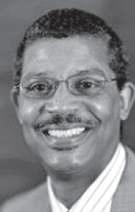
Michael Irvin, who teamed with Troy Aikman and Emmitt Smith to form the original “triplets,” said on Twitter, “Ezekiel Elliott (and) Dez Bryant. We’ll be on our way to a Super Bowl.” Irvin selected Elliott for the Cowboys in a NFL Network mock draft.
n “Ezekiel Elliott (and) Dez Bryant. We’ll be on our way to a Super Bowl.” – Michael Irvin
While Elliott would certainly have an immediate impact on the Cowboys’ offense, the team’s defense finished 17th in the NFL and 31st in sacking the quarterback. Edge rusher Randy Gregory and defensive end Demarcus Lawrence will both miss the first four games of the season with drug-related suspensions.
To help bolster the pass rush – for now and in the future – the Cowboys could go with defensive end Joey Bosa Elliott’s Ohio State teammate Jason Cole at Bleacher Report quoted an anonymous AFC scout as saying, “Elliott likes to party and the college life. You worry about him missing meetings and staying out all night.”
I think this is gamesmanship. Some team wants Elliott to fall in the draft so it can swoop in and take him – so somebody floats this kind of trash.
By the way, the other reportedly big partyer at Ohio State? Bosa. I don’t put a lot of stock in that either.
All other reports on Elliott are glowing. He’s a

responsible, good-natured young man with a strong work ethic. This lifelong Cowboys fan would have no problem with his selection.
Beal needs to bounce back
Bradley Beal’s expected breakout season turned out to be his worst, based on the number of games he played.
His Washington Wizards closed the year 41-41 and failed to reach the NBA Playoffs. Nagging injuries again slowed the former Chaminade Prep and Florida star, and Beal played in just 55 games.
Beal and fellow guard John Wall played together in only 52 games. According to NBA statistics, over the 1,241 minutes they were on the court together the Wizards outscored

opponents by a whopping one point every 100 possessions.
“We both should’ve had a better year than we had. We should’ve carried the team a little better than what we did. We both can attest to it,” Beal told CSN MidAtlantic.
“There was no beef (between us) or anything like that. I think sometimes we put a lot of pressure on ourselves and we tried to overdo it especially if one’s not playing and the other one is. Overall, it’s no excuse.”
Beal averaged 17.4 and 2.9 assists per game, but his total of 1,708 minutes played was the lowest of his career – less than his rookie year when he played in 56 games.
Wall averaged 19.9 points and 10.2 assists and was named to the East Conference All-Star team for a third season in a row.
Wall said Beal’s injuries interrupted what could have been a great season.
“If he didn’t get hurt he was on pace to probably be an AllStar also. We would’ve been a better team,” he said.
Continued from B3 because the Eagles want to draft a QB. He should be doing all types of praise dancing after stinking up the Edward Jones Dome for four years, getting traded and collecting every penny of that rookie contract and then landing $22 million guaranteed from the Eagles. His entire career he has never had to fight for a job as the
Beal is a restricted free agent, and former Oklahoma City coach Scott Brooks is taking over for the dismissed Randy Wittman. The Wizards will make a big-money play for free-agent Kevin Durant, who adores his former coach.
Whether Beal is a Wizard next year is for now unanswered. The bigger question is: Can he find a way to stay healthy?
Another life knocked out
By the time most boxers reach the age of 26, they have either achieved success or have given up the sweet science.
Occasionally, there is an exception to the rule, and St. Louis’ Michael Williams seemed to be just that one-infew boxers.
His trainer Harold Petty, one of the area’s best, said Williams had been a dedicated student of the sport for the past 18 months. He had won a fight in August on a firstround knockout and other bouts would be coming his way.
starter, and he can’t even handle competing against either Carson Wentz or Jared Goff? According to NFL Insider Ian Rapport, the Eagles feel blindsided by Bradford’s trade request. Longtime Philadelphia radio host Phil Allen – now program director for 98.5 FM and contributor to NTheZone had this quip on twitter about Bradford: “too much dead cap $11m if they trade him before June 1 Broncos and Jets seem good spots though #NFL #shutUpSam.” That was
His promising future as a boxer and his life came to an end early last Saturday when an argument with three men led to gun fire. Williams became yet another city murder victim. He was shot while sitting in the backseat of a SUV.
Williams was reportedly killed after leaving a South Jefferson nightclub at about 1 a.m.
Petty told the Post-Dispatch the murder “made me mad.”
“I tell these guys all of the time that you have to account for all of your time. You have to do something constantly. Do not be in the streets. There is nothing out there,” he said. While that might be sage advice, leaving (or arriving at) a nightclub at 1 a.m. should not be life-threatening. An argument should not lead to cold-blooded murder. A life and career that is finding its footing should not be snuffed out so callously. Most importantly, Williams’ two young children, a boy and girl, should not be without a father.
about the cleanest one I could find coming out of the city of brotherly love. Bradford has fooled us all for years. He has managed to make over $100 million playing a shade over .400 football, with no playoffs, and shaky health. Well, guess you no longer have to wear that traditional uniform of a ski mask and gloves to get paid some paper. All you have to do know is wear a football uniform and yell, “Hike!”
By Travis L. Brown Sr.
Guest columnist
St. Louisians are as passionate and knowledgeable as any fan base in America. In fact, we are known for having the “best fans in baseball.”
We love our teams and idolize our athletes for their accomplishments on the field and their contributions off the field. It is a St. Louis birth right to “bleed blue” or be a part of “Cardinal Nation.”
Mention the names Bruce Sutter, Lee Smith or Trevor Rosenthal and one statistic immediately comes to mind – the save. Talk about Mike
Liut, Curtis Josephson or Brian Elliott, and that same statistic jumps to the forefront of the conversation – the save. News reports, highlight shows and social media buzz centers around these saves and excite the fans.
Football does not have an official save statistic, and St. Louis no longer has a professional football team to call our own. However, there was a very real save made in St. Louis this winter, and it was made by the Los Angeles Rams. It did not attract media attention. No mention on social media, either. But, the impact of this save is very
real and very important to our community.
The announcement of the Rams leaving for Los Angeles dominated the conversation in St. Louis for months. Fans were disappointed and angry that we losing the team and most, if not all, of the reports were very negative towards the Rams. How easy it would have been for the Rams to simply slip away and never look back. I have to tell you, that is not the case.

Since 2012, the Rams have made a commitment to support the high school scholar athletes recognition program in Saint Louis Public Schools. They have provided funding, keynote inspirational speakers and table role models for almost 2,500 hard-working and academically talented scholar athletes in our schools during this time. Without the Rams, this recognition event would not have materialized in the first place.

The Southwest Illinois Jets 15U boys team won the championship at last weekend’s St. Louis Spring Showdown, held at the Center of St. Louis. The Jets finished the tournament with a 5-0 record and defeated Arsenal Hoops in the championship game. The members of the team (in alphabetical order) Donovan Clay (Alton), Christian Curtis (O’Fallon), Aaron Daniels (McCluer North), Julius Erby (Pattonville), Zaire Harris (Springfield High), Rasean Pate (Cardinal Ritter), Keith Randolph, Jr. (CBC), Josh Rivers (Alton), Ahmad Sanders (Alton), Izeal Terrell (Alton), Kienen Walker (Belleville East), Terrance Walker (Alton). Coaches are Ramelle Shephard and Greg Caffey.
Continued from B3
Hazelwood Central girls dominate at Ladue
Hazelwood Central’s girls put on a show in winning the team championship at the Phil Brusca/Connie Strobach Invitational at Ladue. The Hawks were especially dominant in the sprints and hurdles. Defending state champion Destiny Nash won the 400-meter dash. Senior Symiah Fulton won the 100meter high hurdles while senior Devyn Torbert won the 300-meter low hurdles. Deja Ingram finished first in the 200 and the Hawks also swept the 4x100- and 4x200-meter relays. The Hawks will be a force to be reckoned with come postseason time. On the boys side, senior Lawan Alade-Fa of Hazelwood Central was an individual standout at Ladue, winning the 100 and 400. Alade-Fa turned in a winning time of 48.7 seconds in the 400. Chris Cleghorn of Pattonville won the long jump with a personal best of 23 feet 8 inches. Alvin Thompson of Cardinal Ritter won the triple jump with an effort of 46-1.
The Lafayette Lancers controlled all of the distance events. They won the 4x800meter relay with an impressive time of 7 minutes 55.87 seconds. Standout Dylan Quisenberry won the 1,600meter run with a 4:17.17, edging teammate Devin Meyer, who posted a time of 4:18.6. Adam Haines won the 3,200 in a time of 9:24.96 while teammate Nassim Oufattole was second.

Fred Lyon Invitational
It was a good day for the host Parkway North Vikings at the Fred Lyon Invitational. Sprinter Jermaine Holt was the 200 in 22.12 while freshman David Buckner won the 300-meter intermediate high hurdles. Freshman Jalani Williams was second in the 110-meter high hurdles while
the Vikings were first in the 4x200 and 4x400 and second in the 4x100. Senior Daniel Morris of Fort Zumwalt East was a double-winner in the 100 and 110-meter high hurdles. Derick Clemons of Eureka took home a first-place medal in the 400.
What’s on tap
The Marion-Freeman Clayton Invitational will be held on Saturday at Gay Field, beginning at 10 a.m. The Victoria Reaves Invitational will be held on Saturday at Parkway South. The KimballWintermeyer Invitational will be held at Eureka on Thursday and Friday.

The junior standout was one of the top performers at last weekend’s Winston Brown Invitational at Edwardsville. Anderson took home three first-place medals in helping the Tigers win the team championship. He won the 110-meter high hurdles and 300-meter individual hurdles. He posted times of 14.32 in the 110s and 38.8 in the 300s. He also ran a leg on the Tigers’ first-place 4x100-meter relay.
As a sophomore in 2015, Anderson earned three medals in helping the Tigers win the IHSA Class 3A state championship. He finished second in the 110-meter high hurdles and earned All-State medals on the Tigers’ 4x100 and 4x200-meter relay teams.

The Saint Louis Public Schools scholar athlete event is held in late spring. When news broke of the Rams officially leaving in early winter, this year’s event was in serious jeopardy. The Rams’ financial support is vital to holding the recognition program as the event must be 100 percent funded by donors and result in no cost to the district budget. Fortunately, for this year’s group of more than 500 scholar athletes, the Rams made the save. Rams executive Molly Higgins, the Saint Louis Public Schools’ liaison with the team, is a true star in every right.
With what I am sure is at least a million things to do to assist with the relocation, she did not hesitate to make sure this year’s Saint Louis Public Schools scholar athlete event on May 4 received financial support from the Rams. She actually managed to get



continued from page B1
“Talk to somebody,” Leach said. “Tell the FTC. We want to bring these cases. We want to shut them down. One complaint can have a real impact.”
The FTC urges consumers to contact them any time they are pursued for money by someone they don’t know. This includes debt collectors, who may have purchased old debt from another creditor where the statute of limitation has expired and the debt is no longer legally recoverable. Fraudulent court actions can be dismissed through proper investigation.
Report suspected scams to the FTC by calling 877-3824357. More FTC resources about scammers are available at ftc.gov/PassItOn.
Though officials know that fraud is an under-reported crime, which obviously makes it a crime that is more difficult to investigate and prosecute, there are plenty of reports being made. In 2015, the FTC database received more than 1.2 million fraud complaints, with reported losses of over $765 million.
Missouri is nearly in the top one-third among states hit by fraud. Missouri ranked 17th out of the 50 states in terms of the prevalence of fraud complaints in 2015. The FTC received just over 37,000 fraud complaints from Missouri consumers.
The top fraud reported by Missouri consumers was debt collection by a wide margin; next were imposter scams; frauds relating to telephone and mobile services; prize and sweepstakes scams; and autorelated complaints.
From St. Louis itself, the FTC received nearly 11,000 fraud complaints from consumers, ranking St. Louis 126th out of all large metropolitan areas in the U.S. in reporting fraud. Missouri leads the nation among states, and St. Louis leads the nation among cities, in prevalence of identity theft
There are several agencies that investigate cases of fraud and scams.
Federal Trade Commission 877-382-4357
Missouri Attorney General 800-392-8222
FBI St. Louis 314-589-2500
Better Business Bureau 314-645-3300
complaints, but that may be more an artifact of reporting protocol than a reflection of crime trends. The FTC received 22,164 identity theft complaints from Missouri residents in 2015, with more than 19,000 of those originating in St. Louis, but a St. Louis detective said a state law is driving those numbers up.
“Missouri is the only state that gives local police jurisdiction over identity theft,” said Sergeant Robert Muffler of the St. Louis Metropolitan Police Department. “That’s why you get a lot of official reports here. State law mandates that a local police agency make a police report.”
The FTC has a standalone web site for victims of identity theft at Identitythift. gov. Kossow said this site prompts victims to develop a “personal recovery plan” based on the details of the scam that defrauded them. It also helps victims to craft customized letters to send to the IRS and other financial agencies.
The FTC is not the only agency that hears from fraud victims.
“Some call the FTC, some call the Better Business Bureau, some call the attorney general,” said Cheryl Schuetze, assistant attorney general in Missouri. “Some don’t call anybody. Call somebody.”
Schuetze said their office receives about 125,000 fraud complaints per year. “The vast
majority of those calls are directed to advocates who try to advocate for the consumer,” she said.
She said their office pursues both civil and criminal charges against scammers, sometimes both at the same time, though it is not easy to reclaim money on these cases. “Unfortunately, most scam artists don’t bank their proceeds,” she said. “It’s not easy to go get that money.”
Schuetze said that government investigators, whether state or federal, are often the best resources for scam victims because frequently the sums involved are not large enough to entice a private attorney to take a case.
“A lot of scams are for very small dollars,” she said. “Though it’s important to the victims, most private attorneys are not going to take a case where they get 30 percent of $300. We’re not on commission, so we’re going to take action.”
The Missouri Attorney General hotline to report fraud is 800-392-8222.
Andrew Ryder, chief of the white-collar crime division of the St. Louis FBI, said criminal investigations of fraud are challenging.
“Frauds are getting much more complex,” Ryder said. “These are not roofing scams after a hail storm. This might be somebody in another hemisphere who stole your identity in three different ways. The cooperation we receive overseas is based on current high-level diplomacy. And we’re often not able to get victims to cooperate because they are scared of the bad guy who is controlling them.”
However, Ryder said, the U.S. Department of Justice, which includes the FBI, wants to hear from crime victims and will try to seek justice for them.
“The U.S. attorney will work these cases aggressively,” he said. “We’ll find a place for these cases.” Call the FBI St. Louis at 314-589-2500.
More Federal Trade Commission resources about scammers and fraud are available at ftc.gov/PassItOn.
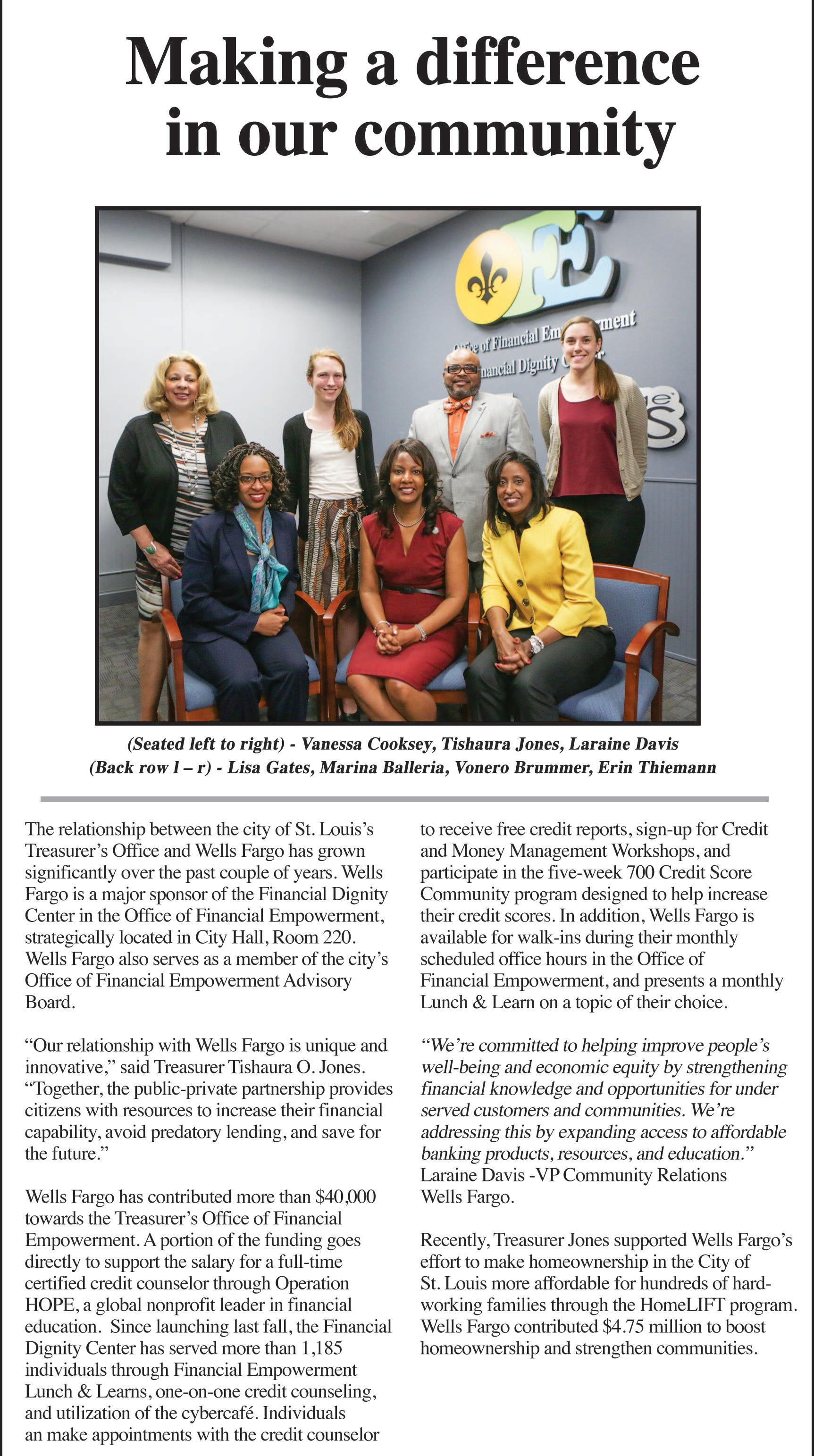


By Kenya Vaughn Of The St. Louis American
I’m going to let y’all in on a little secret that may come as a shock as the whole world mourns his sudden passing last Thursday. I didn’t grow up a huge Prince fan.
Getting caught singing “Do Me Baby” by my father essentially sealed Prince’s fate in our household.
“‘Do Me Baby’?” he said. “Do what?”
The tone of his voice instantly brought me to tears as I explained that I heard it on Majic 108 the night before.
“I don’t know how the [expletive] they get away with playing that [expletive] on the [expletive] radio,” he said.
And so began the implied ban.
He didn’t tell us we couldn’t listen, but he would change the radio station whenever his songs came on. He also declined our request to buy the “Purple Rain” album. And he didn’t take us to see the movie at the Lewis and Clark Drive In either. In all fairness to my father, there were things that he would’ve had to explain to three girls not too far from toddlerhood had he indulged us. My father died at the height of Prince’s fame, but my fandom didn’t recover until almost 30 years later.
Don’t get me wrong, Prince had some serious jams that came on the radio as I was coming up. I probably know every word to the ones I liked (and some that I didn’t).
However, I was conditioned out of going hard for him.
In college, I felt like the only girl in my dorm who didn’t have the life goal of becoming Prince’s next protégé / backup dancer/ sideline girlfriend.
“Go see him live,” a Hunter Hall homie told me. “You’ll change your mind. Better yet, he’ll do it for

June 7, 1958 – April 21, 2016
Musical legend Prince passes suddenly at 57, is mourned worldwide
By Kenya Vaughn Of The St. Louis American
To get a comprehensive understanding of the scope of Prince’s influence on the music industry, all one had to do was tune into the radio when the news of his sudden passing at the age of 57 was confirmed last Thursday, April 21, 2016. Nearly every station on the FM dial was paying tribute by playing his music. Hip-hop, old school, adult contemporary, urban adult contemporary, even the oldies station, took a break from their regularly scheduled programming to pay homage.
n “As one of the most gifted and prolific musicians of our time, Prince did it all.”
– President Obama
An earlier version of this story published on stlamerican.com mentioned that Top 40 and country formats were the only exception, but local country music radio personality Bo Matthews issued a correction.
“92.3 WIL St. Louis’ New Country station was involved with sharing the sad news,” Matthews said. “Within minutes 92.3 WIL was on it with our Midday Show host Judi Diamond, and during my show I shared several thoughts of country music’s biggest stars social media posts about Prince’s passing.”
“It has been confirmed. I’m heartbroken,” said April, midday jock for adult contemporary station
106.5 The Arch. She tried to hold back the emotion, but her normally pristine voice cracked as she confirmed to her listeners what they all had hoped to be a hoax.
See PRINCE, C4

Thursday, April 21 at age 57.

Black Rep closes season with one-man show about soul legend’s final hours
By Kenya Vaughn Of The St. Louis American

as one of the top-tier maestros of soul music, but St. Louis native Donny Hathaway had less than a decade of activity within the music industry. And many of them were down years as he attempted to get a handle on his sanity. Hathaway released five albums between the years of 1970-73, but crippling mental health struggles meant that he wouldn’t live to fully deliver on his potential. Even still, his musical gifts allowed him to blend soul, pop, the blues and classical music and are considered to have helped lay the foundation for funk. Kelvin Roston Jr. (also a St. Louis native) adds his footprint to the singer/songwriter’s legacy with “Twisted Melodies.”
Thur., Apr. 28, 8 p.m.,
Fubar presents Twista. 3108
Locust St., 63103. For more information, call (314) 289-
9050 or visit www.fubarstl.
com.
Fri., Apr. 29, 7 p.m., The Ready Room presents B.o.B. 4195 Manchester Ave., 63110. For more information or to

purchase tickets, visit www. ticketfly.com.
Thur., May 5, 8 p.m., Old Rock House presents Charles Bradley. 1200 S. 7th St., 63104. For more information, call (314) 588-0505 or visit www.oldrockhouse.com.
Sat., May 7, 8 p.m., The Sheldon Concert Hall presents Cyrus Chestnut: African Reflections. Pianist Cyrus Chestnut blends contemporary and traditional jazz and gospel, plus the occasional seasonings of Latin and samba. His new program filters jazz through the rich music and rhythms of Africa. 3648 Washington Blvd., 63108. For more information, call (314) 533-9900 or visit www.sheldonconcerthall.org.
Sun., May 8, 3 p.m., Meramec Community Orchestra presents Chaco Symphony with renowned renowned Native American Flutist R. Carlos Nakai Chaco Symphony is an original ten movement piece composed and conducted by Gary Gackstatter, professor at Meramec. Free and open to the public. Meramec Community College, 11333 Big Bend Blvd., 63122. For more information, call (314) 984-7639 or visit www. merameccommunitycollege. com.
Sun., May 8, Laugh All Night St. Louis Presents Donnell
Jones with special guests Arvin Mitchell and Rhoda G. Ritz Carlton Grand Ballroom, 100 Carondelet Plaza. For tickets, visit www.metrotix. com.
Thur., Apr. 28, 6:30 p.m., Aim High 2016 Luminosity Gala. Join friends and community leaders for a fun-filled evening with a wide selection of cocktails, appetizers and live music while we help celebrate Aim High’s 25 Years of Inspiration, Determination and Achievement. Entertainment will be provided by Brian Owens and the Deacons of Soul. Aim High is a personal and academic enrichment program for fifth through eighth grade students who have demonstrated potential. Barnett On Washington, 3207 Washington Ave., 63103. For more information, call (314) 432-9500 or visit www. aimhighluminosity2016. eventbrite.com.
Fri., Apr. 29, 6:30 p.m., North Side Community School presents 2016 Friends Helping Friends. Join us for a night of friends, fun and motorcycles. The evening will feature cocktails and dinner with entertainment, a live auction. A special tribute to Martin
How to place a calendar listing
1. Email your listing to calendar@stlamerican. com OR
2. Visit the calendar section on stlamerican.com and place your listing
Calendar listings are free of charge, are edited for space and run on a space-available basis.
Mathews of Mathews-Dickey’s Boys’ & Girls’ Club for his longstanding commitment to the children of north St. Louis. The Moto Museum, 3441 Olive St., 63103. For more information, call (314) 385-9502 or visit www. northsidecommunityschool. org.
Apr. 29 – May 1, HarrisStowe State University presents the Inaugural Male Empowerment Summit, hosted by Dr. Dwaun J. Warmack and featuring Pastor Jamal Bryant and Dr. Steve Perry.
Sat., Apr. 30, 9 p.m., Supernatural: Spring Edition. A Celebration of fros, locs, curls, cuts and the pursuit of nappiness. Setting the mood with afro-funk, soul bombs, house grooves, that ol’ ill hip-hop ish and more will be Nappy DJ Needles of The Soulition. Blank Space, 2847 Cherokee St., 63118. For more information, visit www. facebook.com.
Sat., May 7, 6 p.m., STL
Fashion Movement presents Mother May I Mother’s Day Fashion Show. Several local designers will showcase their Spring/Summer collections, ready for purchase straight off the runway. Hosted by Anthony Freeman of FACE Modeling Development Agency, with music by Ric Louis. Some of the featured designers are: Upgrade My Diva, Alisha’s Pieces, Sewphisticated DIVA, Erika’s Creations, and more. Machinist’s Hall, 12365 St. Charles Rock Rd., 63044. For more information, visit www. eventbrite.com.
Sun., May 8, 1 p.m., Ladies Night Out Entertainment presents Sip & Sashay with Hattitude. Ladies slip on your prettiest hat and join us Mother’s Day for brunch, music, and more. The Christy, 5856 Christy Blvd., 63116.
For more information, call (314) 480-0311 or visit www. LadiesNightOutEntertainment. com.
Sun., May 8, 7 p.m., Ladies Night Out Entertainment presents Mothers Day All White Gala. Enjoy a dinner buffet, open bar, and live entertainment with a performance from The Coleman Hughes Project feat. Adrianne. The Christy, 5856 Christy Blvd., 63116. For more information, call (314) 480-0311 or visit www. LadiesNightOutEntertainment. com.
Thur., Apr. 28, 7 p.m., Secure Entertainment presents the Out Hrrr Laughing Comedy Show Featuring Jason Jenkins, Willie C, Innergy, Joie Krack, and Tree Sanchez. Blank Space, 2847 Cherokee St., 63118. For more information, visit www. eventbrite.com.
Sat., May 7, 6:30 p.m., Humor for Hire presents The Clean Comedy Series: Family Funny hosted by DeAndre Whitner. A clean comedy show for all to enjoy, featuring national and local comedians delivering hilarious comedy with no explicit language/content. KDHX, The Stage, 3524 Washington Ave., 63103. For more information, call (314) 324-0823 or visit www.humorforhire.com.
Sat., May 7, 10 a.m., St. Louis Indie Book Fair. There will be over 100 titles to choose from in fiction and nonfiction, ranging from children’s to adult. 32 authors will be present to sell, sign, and read from their work on stage. We will also host the Pitching Hour where writers

can pitch their story ideas to the publishers present for possible publication. St. Louis Public Library Central Branch, 1301 Olive St., 63103. For more information, call (314) 258-6251 or visit www. markpannebecker.com.
Mon., May 9, 7 p.m., Left Bank Books hosts author Kiera Cass, author of The Crown. In The Heir, a new era dawned in the world of The Selection. 399 N. Euclid Ave., 63108. For more information, call (314) 367-6731 or visit www.left-bank.com.
Thur., May 12, 7 p.m., Left Bank Books hosts author Mark Wilkerson, author of Tomas Young’s War. 399 N. Euclid Ave., 63108. For more information, call (314) 3676731 or visit www.left-bank. com.
Apr. 29 – May 18, Upstream Theater presents The Glass Menagerie. As Williams’ classic has entered our collective memory, it has moved from cutting-edge to canonical. This production aims to take the piece out of the museum in a way that’s guaranteed to move you, and move you to think. Kranzberg Arts Center, 501 N Grand Blvd., 63103. For more information, call (314) 863-4999 or visit www. upstreamtheater.org.
Apr. 29-Apr. 30, 7 p.m. (additional 3 p.m. performance on April 30)
From the creative mind of St. Louis native Samuel Huddleston, CEO of Just 1 Voice Productions in conjunction with Gifted Productions comes “The Me that I am and the Me that I used to Be,” Emerson Performance Center (Bank of America Theater) on the campus of Harris-Stowe State University, 3101 Laclede Ave, St. Louis, MO 63106. For more information please call 314-922-7652 or e-mail your inquiries to just1voiceproductions@gmail. com.
Through May 1, The Black Rep presents Twisted Melodies starring Kelvin Roston Jr. The Edison Theatre, 6445 Forsyth on the Campus of Washington University. For more information, visit www. theblackrep.org or call (314) 534-3810.
Through May 8, The Fox Theatre presents The Sound of Music. The spirited,

romantic and beloved musical story of Maria and the Von Trapp Family will once again thrill audiences with its award winning songs, including “My Favorite Things,” “Do-ReMi,” and the title song. 527 N. Grand Blvd., 63103. For more information, call (314) 534-1111 or visit www. fabulousfox.com.
Apr. 29 – May 31, 1900 Park Gallery presents John Blair’s Dream Interpretation. This show is an artistic exploration of the subjective meaning of unconscious experience. There will be an opening reception on May 6 at 6 p.m. 1900 Park Ave., 63104. For more information, call (314) 5201211 or visit www.1900park. com.
May 6 – 7, Black Speculative Arts Movement 2016. BSAM is an annual comics and art convention. Events include spoken word performances, a black thought poetry workshop, networking events, several lectures in the areas of art, politics, music, and much more. Harris Stowe State University, 3026 Laclede Ave., 63103. For more information and a complete schedule, visit www.facebook.com.
May 6 – 8, Emerson presents the 29th Annual Art Fair. Come out for local food and
beverage vendors, hands-on activities for kids, special wine and beer tasting events, live music and 150 juried artists from across the country. Event proceeds support our presentation of temporary exhibitions, education programs and public events. Laumeier Sculpture Park, 12580 Rott Rd., 63127. For more information, call (314) 615-4278 or visit www. laumeier.org.
Through April 30, Third Annual St. Louis Money Smart Week. Money doesn’t come with instructions, and that’s why organizations across the city are joining together to help support financial education. Over 100 FREE classes will be offered for kids and adults across the St. Louis region. Learn about money management, goal setting, saving for retirement, saving for college, buying your first home, getting out of debt, building credit, how to avoid identity theft, raising money smart kids and more. For a complete list of classes and locations, call (314) 539-4156 or visit www.moneysmartweek.org/ findevents.
Wed., May 4, 6 p.m., St.

Louis Public Library presents Hip Hop Appreciation Week: Beatmaking and Music Production Workshop Teens, join two-time Grammy Award winning producer, songwriter, and engineer Alonzo “Zo” Lee of The Trak Starz for a Beatmaking and Music Production Workshop. Alonzo “Zo” Lee also teaches at Ex’treme Institute by Nelly. Central Library, 1301 Olive St., 63103. For more information, call (314) 2412288 or visit www.slpl.org.
Fri., Apr. 29, 11 a.m., The St. Louis American Foundation’s 16th Annual Salute to Excellence in Health Care Awards Luncheon. Hilton St. Louis Frontenac, 1335 S. Lindbergh Blvd., 63131. For more information, call (314) 5338000.
Fri., Apr. 29, 5:30 p.m., American Heart Association and Edward Jones present Girls Night Goes Red. Join us as we celebrate the power of women in the fight against heart disease and stroke. Edward Jones Headquarters, 12555 Manchester Rd., 63131. For more information, call (314) 692-5673 or visit www.heart.org/ GirlsNightGoesRedSTL
Sat., Apr. 30, 10 a.m., Saint Louis University presents 2nd Annual Ferguson/ Dellwood Community Health & Wellness Fair
This is a free health fair for all residents of the St. Louis area. Community members are encouraged to come for a light lunch, health related information as well as free screenings for blood pressure, blood sugar, cholesterol and Body Mass Index, and EKG testing. Greater St. Mark Family Church, 9950 Glen Owen Dr., 63135. For more information, call (314) 9774084 or visit www.slu.edu/ ccpro.
Sat., Apr. 30, 7 p.m., Dignity Period’s 2nd Annual Spring Gala. Menstruation is a taboo
subject in Ethiopia, which can lead to fear and shame, and most girls must make do with inadequate – and sometimes unsanitary – substitutes for menstrual hygiene products. Missouri Botanical Garden, 4344 Shaw Blvd., 63110. For more information, call (314) 704-1501 or visit www. dignityperiod.org.
Sat., May 14, 7 a.m., American Heart Association presents Metro St. Louis Heart Walk. The walk promotes physical activity and heart-healthy living in a fun, family environment. Busch Stadium, 700 Clark Ave., 63102. For more information, call 855229-4424 or visit www. metrostlouisheartwalk.org.
May 14, 8 a.m., Color Girls Inc. presents Walk for Life: A Kidney for Candace, Christian Embassy Church Complex, 13775 Old Jamestown Rd, Florissant, MO 63033. To register visit: http://colorgirl0.wix.com/ akidneyforcandace or e-mail colorgirlsinc@icloud.com for more information.
Sat., Apr. 30, Lane
Tabernacle C.M.E. Church Hats, Hankie and Pearls Brunch, New Northside Conference Center, 5939 Goodfellow. For more information, call (314) 5330534.
May 20, Healing & Mending Ministry presents their 7th Annual Fresh Anointing Women’s Retreat. Guest Speakers: Pastor Jackie Allen, Minister Jeanne Vogt & Dr. Laurette Pickett. Deposit is due of $50.00 ASAP. Contact: Pastor McCoy-Email: healingm2@gmail.com http:// www.healmending.org


By Kenya Vaughn Of The St. Louis American
“There’s a song in the church that says ‘give me my flowers while I yet live,’” said Robert McNichols, manager of community events and engagement for Opera Theatre Saint Louis. “We are grateful to have this opportunity to honor her during her lifetime.”
Opera Legend and St. Louis native Grace Bumbry will be celebrated by OTSL during a special ceremony just before she leads a master class for five singers from their Gerdine Young Artists Program next Friday, May 6 at The Sheldon Concert Hall.
Mayor Francis G. Slay will present her with a proclamation declaring May 6, 2016 as Grace Bumbry Day.
by Thelma Steward David Steward, the founder and chairman of WWT. “She was a trailblazer for opera in breaking the color barrier in many places all over the world,” McNichols said. “Here she is an AfricanAmerican legend in the field of opera, and she’s from St. Louis. McNichols said her upcoming visit is inspiring not only as singer, but as a mentor.
n “Grace Bumbry was a trailblazer for opera in breaking the color barrier in many places all over the world.”
– Robert McNichols, Opera Theatre Saint Louis
The worldrenowned diva is coming to give the young singers words of wisdom thanks to the generosity of the Steward Family Foundation and World Wide Technology.
The following day she will be recognized at OTSL’s Spring Gala, which is chaired
Continued from C1
“Prince is gone.”
“I just … I …” Staci Static of Old School 95.5 FM hesitated as she sat in her grief for a second.
She didn’t want to say it, but she knew she had to. “It’s been confirmed … It’s true.”
Static didn’t speak it out loud at first, but everybody knew what “it” meant.
Nobody wanted to admit that one of the biggest giants in music now rests alongside musical ancestors, Michael Jackson and Whitney Houston.
“I don’t know about you, but I’m messed up over here,” 100.3 The Beat’s Tammie Holland said on her Instagram page.
She was already off the air when the news broke.
“It feels like a member of my family has died. I loved him so,” Holland said. Listeners at her station clearly felt the same way.
The Beat’s afternoon personality Osei The Dark Secret took their calls.
They sobbed through their favorite memories – most popular was his 1984 concert at the Checkerdome.
By evening a musical tribute was playing on Z 107.7.
Because of their phenomenal mainstream success during the same era, Prince and Jackson were often spoken of together – whether it’s a list of the great ones in popular music, or a debate on who was the best between the two.
The irony is that with Prince’s passing, they have another fate to share – they both left too soon.
‘The day his music died’ TMZ.com was the first to
Continued from C1
The one-man show plays through May 1 and closes out
The Black Rep’s 39th season at Washington University’s Edison Theatre. Depression and paranoid schizophrenia stopped Hathaway’s career in its tracks at the height of his popularity –and ultimately claimed his life. But nothing could diminish his influence. He is still the musical hero to the best of today’s finest singers and musicians nearly 40 years after his death –mainly because of his intricate piano solos and instantly
“We know that there is type of talent in St. Louis – and in our community – so it’s like, ‘How can I be a conduit to this kind of talent? How can I find the next Ms. Bumbry?’”
Bumbry is considered one of the leading mezzosopranos of her generation, as well as a major soprano for many years.

Grace Bumbry will lead a public master class for Opera Theatre Saint Louis’ Gerdine Young Artists Program 11 a.m. Friday, May 6 at the Sheldon Concert Hall, when she also will be honored by the company.
She was among the pioneering generation of singers who followed Marian Anderson in the world of classical music (including Leontyne Price Martina Arroyo, Shirley Verrett and Reri Grist) and paved the way for future AfricanAmerican opera and classical singers.
report Prince’s death. Other outlets were saying that a person was found dead in Prince’s Paisley Park Studios until one of the singer’s publicists confirmed his death to the Associated Press.
“Today, the world lost a creative icon. Michelle and I join millions of fans from around the world in mourning the sudden death of Prince,” President Obama said in a statement. “Few artists have influenced the sound and trajectory of popular music more distinctly, or touched quite so many people with their talent.”
A graduate of Sumner High School, she began her studies at the Boston University Conservatory of Music before transferring to Northwestern University.
Bumbry made her operatic debut in 1960 when she sang Amneris at the Paris Opéra; that same year she joined the
He learned of Matthews’ death just as he was set to take the stage. Like Prince, she was 57.
“I’m trying to stay focused. It’s a little heavy for me tonight. Just keep jamming,” he told the audience.
He frequently referenced Vanity in his set list and shared memories about the singer over the course of the evening. He then delivered funny anecdotes about some mishaps that took place over the course of their relationship.
n “I don’t know about you, but I’m messed up over here.”
No details have been released about the cause of his death, though last Friday his plane had to be turned around midair so that the singer could receive medical attention for an undisclosed illness.
– 100.3 The Beat’s Tammie Holland
He also canceled April 7 performances at the Fox Theatre in Atlanta because of his health.
He had been doing pop-up performances of his “Piano and a Microphone Tour” for the past few months.
According to the St. Louis Post-Dispatch, he was scheduled to have come to St. Louis for a surprise performance of two shows at the Fox Theatre on Monday, April 18.
Just two months ago, at the kickoff of his Piano and a Microphone tour in Melbourne, Australia, Prince paid tribute to Denise “Vanity” Matthews. “I just found out a little while ago that someone dear to us has passed away, so I’m going to dedicate this song to her,” Prince told the audience before performing a solo take on “Little Red Corvette.”
identifiable gospel-rooted first-tenor vocals with painful breaks and soulful riffs that are nearly impossible to imitate.
“Twisted Melodies” is Roston’s imagination of Hathaway’s experience just before he took his own life in 1979 at age 33 by jumping from his hotel room at New York’s Essex House Hotel. The play, directed by founding Black Rep Producing Director Ron Himes, begins with a recording session for what became the posthumously released “Roberta Flack featuring Donny Hathaway.” It ends with him meeting his tragic fate.
“Twisted Melodies” features memories and moments of insanity wrapped around some
“She’d want us to celebrate her life and not mourn her,” Prince said. It would be safe to assume that so would he.
‘A strong spirit transcends’
Prince Rogers Nelson was born on June 7, 1958 in Minneapolis, Minnesota to parents who had migrated there from Louisiana with music in his blood.
Prince’s father was a pianist and songwriter and his mother was a jazz singer.
Prince was named after his father’s stage name. John Lewis Nelson led a jazz group called the Prince Rogers Trio.
It was clear early on that he would follow in his family’s footsteps as a musician. He spent his childhood teaching himself to play a host of instruments, and by age 19, he signed his first record deal and released his debut album, “For You.”
His career spanned five decades with music that defied being boxed into any one particular genre – though references from rock, pop, soul, heavy metal, jazz and even hiphop could be felt throughout his extensive musical catalog.
“As one of the most gifted
Basel Opera. She gained international renown when she was cast by Wieland Wagner (Richard Wagner’s grandson) as Venus at Bayreuth in 1961, at age 24. She was the first black singer to appear there, which earned her the title “Black Venus.”
Bumbry went on to play some of the most esteemed
and prolific musicians of our time, Prince did it all,” Obama said. “Funk. R&B. Rock and roll. He was a virtuoso instrumentalist, a brilliant bandleader, and an electrifying performer.”
With Paisley Park Studios, he singlehandedly turned his hometown into a musical hub that birthed the likes of his protégé band The Time, out of which grew super producers Jimmy Jam and Terry Lewis. He wrote, produced, sang and performed the instrumentation on his nearly 40 studio albums that fed into his many incarnations over the years.
Few artists have enjoyed the critical and commercial success of Prince. His fame peaked in 1984 with the release of the album and film “Purple Rain.”
With the release of the film, in which he stars, he earned No. 1 single, album and movie in the same week.
The title song earned him a “Best Original Song Score” Academy Award, three Grammy Awards (Album of the Year, Best Rock Performance by a Duo or Group with Vocal, and Best Soundtrack for Visual Media) and “When Doves Cry” earned him a Golden Globe Nomination for “Best Original Song.”
He received 32 total Grammy Award nominations over the course of his career and seven wins. Outside of “Purple Rain” his Grammy wins were in R&B categories.
Among countless other honors, Prince was inducted into the Rock and Roll Hall of Fame in 2004.
“‘A strong spirit transcends rules,’” Prince once said – and nobody’s spirit was stronger, bolder, or more creative,” said Obama.
n Aside from being a first-tenor, Kelvin Roston doesn’t sound much like Hathaway. But who does?
of Hathaway’s most popular songs and covers. It is a demanding show that would squeeze the life out of a less talented performer, but Roston is up for the challenge he presented himself when he created the one-man production. He plays. He sings. He acts. He draws the audience in with a bird’s eye view of mental illness.
Aside from being a firsttenor, Roston doesn’t sound much like Hathaway. But
who does? Hathaway’s vocal prowess is the main reason he rests among the soul giants. However, because of his sincere passion, Roston’s singing sits especially well with the audience.
For the Wednesday night show, women in three separate groups inserted themselves into the show nearly every time Roston would segue into one of Hathaway’s signature selections.
When the show was over, he received two standing ovations
she will bless the Young Artists with her insight.
“I’m hoping that she will be able to give them that one nugget of wisdom that can make a difference,” McNichols said. “I hope that they recognize this opportunity to work with one of the greatest of our time.”
The general public is welcomed to attend the ceremony and master class to see some of the rising stars of classical music being nurtured and to lift up Bumbry for her contributions to classical music.
“Prince just died – and in his passing you realized there were so many lives he could have touched with his gift had he not,” McNichols said. “I feel like we need to recognize greatness while we have the opportunity to speak with them, gleam with them and learn from them. Because they are not going to be with us always.”
opera houses around the globe. Among her many awards includes being named a 2009 recipient of Kennedy Center Honors by President Barack Obama for her contributions to the arts.
She left the stage as a performer in 1997, but continues to educate.
McNichols is thrilled that
Continued from C1
The public master class with Grace Bumbry will take place at 11 a.m. Friday, May 6 at the Sheldon Concert Hall, 3648 Washington Blvd. The event is free and open to the public, but registration is required. For more information, call 314961-0644 or http://www.operastl.org.
Superdome. He was the hands down highlight of the 20th Anniversary festivities. Sorry, Lionel Richie. All of the other reporters were beside themselves about having the opportunity to cover the show.
Just before he took the stage, the entire venue went dark. “You ready, girl?” a fellow reporter asked me.
“Absolutely,” I said. I hoped that I had successfully disguised my indifference so that it didn’t diminish the moment for her.
“Dearly beloved, we are gathered here today to get through this thing called life,” Prince said before he powered right into “Let’s Go Crazy.” He hadn’t really done anything yet, but he already had his hooks in me.
At the end of his set I left a newly converted, yet utterly devout, follower of “His Royal Badness.” I also walked away feeling I had cheated myself by not listening to my college friend sooner.
I spent the next two years trying to play catch up. I started by going back and listening with intention to the songs I really liked. He arranged pop, rock and R&B with the precision of a symphonic composer. His lyrics read the way I wish I could write stories. He could sum up in a handful of words what takes me 10 paragraphs to get wrong.
“If God one day struck me blind, your beauty I’d still see,” he sang passionately on the R&B ballad “Adore.”
“Love’s too weak to define just what you mean to me.”
– one for his performance and another for his “A Song For You” encore.
The narrative Roston wraps around the music is fictionalized and could benefit from a bit of tweaking to add more fact and true life experiences. He frames it just right, though – so the show still profoundly resonates with the audience. Roston transcends beyond the plays shortcomings as far as the dialogue with his interpretation of wrestling with hallucinations and other symptoms. He delivers the moments with grace and a particular level of care and that humanizes the experience.
Well-executed production elements – especially Rick
Really, Prince? Hearing that made me wish I had slow danced to it when it was in rotation.
Yes, he talked about sex – a lot. But he also talked about love, politics, crises within the community and God.
In my research, I found out that “Let’s Go Crazy” is actually a sermon disguised as a rock record. It became my favorite from Prince’s extensive catalog. He’s encouraging us to join him in being so focused on finding joy and choosing optimism that we are all mistaken for being insane.
’Let’s go crazy
Let’s get nuts Look for the purple banana
‘Til they put us in the truck, let’s go!
Prince was free –as a matter of fact, he was liberation personified. He refused to adhere to labels. This black man from the Midwest with parents from ultra-conservative Louisiana laughed in the face of gender norms. In an industry obsessed with categories, his music forced his way out of their respective boxes – and sacrificed his popularity to protect his art.
When he found his faith as a Jehovah’s Witness, he was brave enough to evolve into a persona more reflective of his convictions.
Prince left us too soon, but he left us as a glorious example of fearlessly living and operating in our individuality and authenticity.
I might have been one of the last fans to jump on board, but I’m so glad I took the trip.
Sims’ sound design – add plenty of value to “Twisted Melodies.”
Sims allows the audience into Hathaway’s headspace with audio elements that tune them into the frightening experience of losing control of one’s own thoughts through hallucinations– and the constant internal battle between the real and imagined. The Black Rep’s presentation of Twisted Melodies by Kelvin Roston Jr. continues through May 1 at Washington University’s Edison Theatre. (Note: there will be no performance on Thursday, April 28.) For more information or tickets, visit www.theblackrep.org or call (314) 534-3810.


Ira Washington and Linda Rucker-Washington will celebrate their first wedding anniversary on May 2. Congratulations and Happy Anniversary to the Washingtons! Love, Ronisha
Beaumont High Class of 1968 48-year reunion will be June 10--12, 2016. Friday: Bowling Kick-Off, Saturday: Black n’ White Speak Easy Party and Sunday: Family n’ Friends Picnic. Meetings will be at Florissant Valley Library Branch, 195 New Florissant Rd., Florissant, MO 63031 on Saturday March 26, April 23 and May 28 from 1-4 p.m. For more information call (314) 869-8312.
Beaumont High Class of 1971 is planning its 45th year reunion for July 22-24, 2016. Please send your contact information (address and phone number) to Gladys Smith at beaumont1971alumni@aol. com.
Beaumont High Class of 1984 can stay updated via our
Facebook page “Beaumont Class of 1984”. We meet the last Friday of every month. Contact Rochelle Williams at rochellewilliams001@yahoo. com.
Cole School Alumni & Neighborhood Friends age 50 and older reunion weekend will be held May 12-15, 2016. For more info call Andrea at 314-369-3052 or check our Facebook page at coleschoolstlouis.
Harrison School All-Class Reunion, Saturday September 10, 2016, 6:30-10:30 pm at Ambruster Great Hall, 6633 Clayton Rd, St. Louis, MO 63117. Tickets are $60 per person. For more info Contact: Judy Darris 314-443-6741, Yolanda beck 314-346-8103 or Làshell Tolliver 314-420-3566.
Soldan High Class of 1965 presents: “On the Road Again” to Washington, DC. Cost: $479 per-person, double occupancy, 6-Days and 5-Nights, Thurs. June2- Tues. June 7, 2016. First payment due now $75 each person. For more information and reservations contact: Corinne Stuckes (636)-294-4373, Brenda Yancey (314)-8301334 or Isaiah Hair, Jr. (314)-
387-7592 email: cstukes@ charter.net.
Soldan High Class of 1966 has planned its 50-year reunion for September 9-10, 2016 at Christian Hospital Atrium, 1111 Dunn Road St. Louis, Mo 63136. For more information, please contact: Meredith Wayne Farrow, 314.521-8540, Robert Collins, 908.313-5002 or Marilyn Edwards Simpson, 341.837-7746. Facebook, soldan class of 1966 or email: stlsoldan1966@yahoo.com.
Soldan Class of 1971 is planning its 45th year reunion for: June 17-19, 2016 at the Ameristar Casino Resort & Spa, One Ameristar Boulevard, St. Charles, Mo 63301.
Soldan Class of 1976 reunion will be held June 10-12, 2016. For more information, email soldanclassof1976@yahoo. com or Facebook: Soldan High School Class of 1976.
Sumner High Class of 1964 70th Birthday Gala will be held Sat. Aug 13. 2016 at the Norwood Hills Country Club at 6:30 pm. Please contact Joyce Camp for additional information 314-423-8821 or Yvette Allen 314-997-2214 or

Happy 70th Birthday to our mother, Mrs. Beverly Jean Matthews on April 28! May God continue to bless you. With love from your son, Rev. Aaron F. Dallas Sr. and your daughter, Michele D. Johnson. Love you always!

RyLeigh Janelle celebrates her 7th birthday on April 27! We love you to the moon and back, Bunny! Love, Mommy and Pa-Pa
Fannie Clark Rogers 314-3554337 your Gala Committee.
Sumner High School Class of 1966 is planning their 50th Class Reunion. Please contact Ella Scott at 314-436-1696, Els2188@sbcglobal.net with your name, address and email or join the Sumner Class of 1966 Facebook Group page.
Sumner High Class of 1971 is planning its 45th year reunion for August 12-14, 2016 at the Holiday Inn Earth City. Contact: Rita Shields at 314-868-7989 or email ritashields@att.net, Al Wilhite 314-302-3448 or email 27alhouse@sbcglobal. net for more information.

Sumner Class of 1976 will celebrate its 40th Reunion July 15 - 17, 2016 at the Holiday Inn Earth City and Shalom Church City of Peace. Contact B. Louis at 314.385.9843 or email: sumnerclassof76@ yahoo.com for info and/or with your complete mailing address and telephone number(s) or join our Facebook page Sumner Class of 76.
University City High School Class of 1976 is planning its Fabulous 40th year class reunion for June 24-25, 2016. We need your contact information. Please email your information to: weareuc76@ gmail.com or call the UCHS Class of 76 voicemail at 314301-9597.
OF
Do you have a celebration you’re proud of? If so we would like to share your good news with our readers. Whether it’s a birth, graduation, wedding, engagement announcement, anniversary, retirement or birthday, send your photos and a brief announcement (50 words or less) to us and we may include it in our paper and website – AT NO COST – as space is available Photos will not be returned. Send your announcements to: kdaniel@stlamerican. com or mail to: St. Louis American Celebrations c/o Kate Daniel 2315 Pine St. St.
Reunion notices are free of charge and based on space availability. We prefer that notices be emailed to us! However, notices may also be sent by mail to: Kate Daniel, 2315 Pine St., St. Louis, MO 63103
Deadline is 10 a.m. on Friday. If you’d like your class to be featured in a reunion profile, email or mail photos to us. Our email address is: reunions@ stlamerican.com








RIP Prince. I almost had to take a week off of Partyline for bereavement. Yes, my heart was that heavy when TMZ broke the news that Prince had passed away. I know y’all know, because folks were so devastated that some of y’all seriously considered taking a mental health day from work last Friday. I spent from 12 noon Thursday until I hit up my first Prince Tribute Friday night praying that it was the most elaborate celebrity death hoax in the history of the internet. Sadly, it was not to be. I’m still sick as I write this, nearly a week later. To simply say that he will be missed doesn’t do justice to his place in many of our lives. He actually described our feelings for him best wit the lyrics in his song “Adore”…. “Love’s too weak to define, just what you mean to me.” Rest well Prince Rodgers Nelson. You changed the game and blew the ceiling off of possibilities and creative boundaries. Paisley Park style at Boogie Nights. Friday night I was making my business to get a taste of some tributes in Prince’s honor. My first stop was to Boogie Nights (inside Hollywood Casino) for DJ Kut’s Purple Party. Friday it was twice the size of the regular crowd – and completely blended. Nothing better expresses Prince’s impact than folks of all shades, from all walks of life breaking it down on the dance floor to his music. He was probably peeking down with the biggest grin on his face.
Hippies help Needles celebrate ‘His Purple Highness.’ Nothing….I mean absolutely nothing could have prepared me for what I experience when I made my way to Nappy DJ Needles impromptu That Purple Stuff at 2720. Now I had to stop by to see what Needles had cooking – mainly because he gave Prince his due while he was on earth with regular episodes of That Purple Stuff. I had to be on hand to see how the energy would go for That Purple Stuff now that he has passed on. I get to 2720 and there is some sort of psychedelic yoga transcendental meditation session going on. There I was like “I know I wasn’t hip to all 40 of Prince’s records, and I’m well aware that there was a side to him



Debbie Fleming made at trip back to STL just for the occasion. Even with my expectations, I had no idea how real the turn up would be. All of the high-powered folks let loose by evening’s end. And you know I was going to say this at least once, but they partied like it was 1999 up in there!
By Delores Shante dshante@stlamerican.com
that I didn’t now, but I think I would have heard if he had made ‘music’ like this.” Somebody who sounded like a human oboe was doing some kind of hum as the folks just sat there Indian style on the ground. It was like I had been sucked into some alternative reality life force. I’m sure it was the bewildered look on my face, but one of the staff said “the Prince tribute is around back.” I walk through the Woodstock 2.O crowd in the backyard and head up the steps to see that Needles is gettingitin.org! But the most glorious thing of it all is that a huge chunk of the hippie crowd had trickled upstairs to join us. They brought their glow in the dark hula hoops and did their flowery hand choreography as they sang along to “Raspberry Beret.” Prince would have got an utter kick out of seeing these absolutely unlikely crowds imaginable party in his honor.
Setting it off with Somethin’ Purple. Since I’m already in the flow of the Prince Tributes, I might as well keep it going with Prince’s conservative long lost twin Larry Blue’s Something Purple Party at Troy’s Jazz Gallery. His birthday parties are the stuff of record and Saturday night was no different as he switched the Somethin’ Blue to pay his respects to Prince. I knew it was going to be one for the record books when newly relocated
Great start for Spring Jam. Good Gawd Almighty, the grown folks have their own Super Jam! And the first one was just about everything any of us could hope for with Old School 95.5 FM’s inaugural Spring Jam. I’m not sure I’m sold on the name, but the concert itself made up for it. Lyfe Jennings, Angie Stone and Anthony Hamilton have the distinction of being the first-ever Spring Jam artists when they took the stage Sunday night at The Fox Theatre. Lyfe Jennings made his sampler show even less filling by doing snippets and repeatedly asking how much time he had. It didn’t make him any less talented though. I hate to say it, but Angie Stone was a snooze to me. I feel like when the sound couldn’t get right, get tight she never checked back in and yawned her way through the show – and so did I. Angie looked AMAZING though. At 54 she would give any single 37 year-old a run for their money. She did my jams, but her heart or her voice wasn’t in it. After saying “she was cool…I guess,” when Angie Stone left the stage, Anthony Hamilton hopped across the stage with a full leg brace. I was a nervous wreck when I saw him that I would be underwhelmed, but I should’ve known better. Anybody else would have stayed on the sick and shut in list – or completely mailed in their performances. Anthony did that! I’m so sad that his backup singers The Hamiltones’ latest innanet hit (yes, I said innanet) “Put Some Respeck On It” hadn’t dropped until Monday. In hindsight, they should’ve given us a sneak preview when they were given their moment in the spotlight during the show. But back to Anthony…He was more subdued than usual –which is understandable considering his state. Even still, it was enough for me to feel like I got what I

Part-Time, Monday-Friday, predominantly serving the St. Louis City and

U.S. Probation Officer vacancy/ies, Eastern District of Missouri. Generous retirement/ benefits package. For additional information including how to apply, see our website at www.moep.uscourts.gov Vacancy Announcement 2016-04. Equal Opportunity Employer.
City of Florissant is accepting applications from qualified applicants for the position of City Engineer. ABachelor of Science degree in Civil Engineering, EIT/FE required, PE preferred & 3 plus years of experience in the engineering and/or government sectors is required. Starting salary $66,747.20 & benefits. Pick up application or submit resume to Human Resources, 1055 Rue St. Francois, Florissant, MO 63031, hr@florissantmo.com EOE M/F/Veteran/Disabled







Purchasing Division, 2350 Market Street, St. Louis, Missouri 63103-2555 until 10:00am May 27, 2016 for Purchase of: BEARINGS
Specifications and bid forms may be obtained from www.stlmsd.com - click on “MSD At Work”, then “Bidding on Projects”. The bid document will be identified as 6450 RFQ. If you do not have access to the internet, call (314) 768-6314 to request a copy of this bid.
Metropolitan St. Louis SewerDistrict is an Equal Opportunity Employer.
Solicitation For Bids (SFB) for Emergency Pavement RepairServices
Bids Wanted
Bid documents may be obtained at Lambert St. Louis International Airport - Airport Properties Division, Monday through Friday between 8:30 a.m. and 5:00 p.m., or by calling (314) 426-8184. This SFB may also be obtained by visiting our website at www.flystl.com (Click on “Business Opportunities”).
Robert Salarano Airport Properties Division Manager
to, removal of
include,
and gutters, incidental paving, driveway apron, waterproofing of vaults/basements under the sidewalks, replacement of deteriorated or non ADA compliant sidewalks and curb ramps, rehabilitation of storm drainage structures, sign relocations, street lighting (roadway and pedestrian), landscaping and traffic control.
Amandatory pre bid conference will be held at 3:00 PM Monday, May 9, 2016, in the St. Louis Development Corporation Board Room, 1520 Market Street, (2nd floor).
Bids will be received until 3:00 PM on May 25, 2016 at St. Louis Development Corporation Attention: Aminah T. Wright, 1520 Market Street Suite 2000, St. Louis, Missouri 63103. All bids shall be publicly opened at this time. The complete Bid Package is available at https://www.stlouis-mo.gov/government/ procurement.cfm.
MWBE PREBID MEETING NOTICE
The SITE Improvement Association is hosting a Prebid meeting for Qualified and Certified MWBE contractors to discuss working on Sappington Creek I/I Reduction Contract Letting No. 11990-015.1
Asecond pre-bid meeting is being held on behalf of the following SITE contractor members:
Fred M. Luth & Sons Bates Utility Co.
4516 McRee Avenue 841 Westwood Industrial Drive St. Louis, MO 63110 Weldon Spring, MO 63304 314/771-3892 636/939-5628
The meeting will take place at 10:30 a.m. May 11, 2016
SITE Improvement Association 2071 Exchange Drive, St. Charles, MO 63303
For questions regarding this prebid meeting, Contact the SITE Improvement Association office at 314/966-2950.
METROPOLITAN ST. LOUIS
SEWER DISTRICT
Notice is hereby given that the Metropolitan St. Louis Sewer District will receive RFQ’s in the Purchasing Division, 2350 Market Street, St. Louis, Missouri 63103-2555 until 10:00 a.m. on May 23, 2016 to contract with a company for: RUGGEDIZED LAPTOPS. Specifications and bid forms may be obtained from www.stlmsd.com, click on the “MSD AT WORK” link, (bid opportunities). The bid
w
Fred M. Luth & Sons Bates Utility Co. 4516 McRee Avenue 841 Westwood Industrial Drive
St. Louis, MO 63110 Weldon Spring, MO 63304 314/771-3892 636/939-5628
5, 2016


MWBE PREBID MEETING NOTICE
The SITE Improvement Association is hosting a Prebid meeting for Qualified and Certified MWBE contractors to discuss working on North Baden Creek I/I Reduction Part 2 Contract Letting No. 11693-015.2
A second pre-bid meeting is being held on behalf of the following SITE contractor members:
Fred M. Luth & Sons Bates Utility Co. 4516 McRee Avenue 841 Westwood Industrial Drive St. Louis, MO 63110 Weldon Spring, MO 63304 314/771-3892 636/939-5628
The meeting will take place at 10:00 a.m. May 11, 2016
SITE Improvement Association 2071 Exchange Drive, St. Charles, MO 63303 For questions regarding this prebid meeting, Contact the SITE Improvement Association office at 314/966-2950.
Sealed bids for the City of Dellwood, Hudson and Trask Improvements , STP-5401(680) (hereinafter “Project”) will be received by Dellwood City Hall, 1415 Chambers Road, Missouri 63135, until 2:00 p.m. local time, on Wednesday, May 25, 2016, at which time the bids will be publicly opened and read aloud. The Scope of Work includes street improvements to Hudson Road and Trask Drive within the City of Dellwood and provides for pavement preparation, asphalt resurfacing, concrete sidewalks, concrete curb, pavement striping, traffic control and other incidental items and work described in the Project Manual, or reasonably inferable therefrom. The City of Dellwood anticipates issuing notice to proceed in the late summer/ fall of 2016. Bid packages are available and may be obtained from the Fenton office of Cochran located at 737 Rudder Road, Fenton, MO 63026 between the hours of 7:30 a.m. and 4:00 p.m., Monday through Friday, upon payment of a non-refundable fee of $50.00 per set. Make checks payable to Cochran. For directions, please call 314-842-4033. To obtain a bid package, the bidder must provide all contact information requested on the Plan Holders List. Abid security in the amount of five percent (5%) of the bid amount must accompany each bid, in accordance with the Instructions to Bidders. For a contractor to be awarded this project the contractor must have a fully responsive contractor questionnaire on file with the Missouri Highway and Transportation Commission at least 7 days prior to the bid opening date. No Second Tier Subcontracting will be allowed. The wage rates applicable to this project have been predetermined as required by law and are set forth in this specification. When Federal wage rates are applicable and included, this contract is subject to the “Work Hours Act of 1962”, (P.L. 87-581: 76 Stat. 357) and implementing regulations. When state and federal wage rates are both required the higher of the two for each job classification shall be used. Effective January 1, 2009 and pursuant to RSMo 285.530 (1), No business entity or employer shall knowingly employ, hire for employment, or continue to employ an unauthorized alien to perform work within
HUD THE ANNUALSUBMISSION OF THE FY2016 AGENCYPLAN
The St. Louis Housing Authority (SLHA) is submitting to HUD the Annual Submission of the FY 2016 Agency Plan. The Plan outlines the goals and objectives to accomplish its vision over the next five years. SLHAhas posted the “Draft” FY2016 Agency Plan for public review on
MO 63303















Claim it would protect a wide range of discrimination
American staff
The Public Rights/Private Conscience Project at Columbia Law School issued a statement on April 18 about Missouri’s Senate Joint Resolution 39, a proposed amendment to the state constitution. The statement posits that SJR 39 would prevent Missouri and its municipalities from prosecuting crimes, including trespass, harassment, or assault, that are motivated by a religious belief concerning marriage between same-sex couples.
SJR 39 would prohibit the state and local governments from imposing a “penalty” on many religious individuals and organizations for acts motivated by their “sincere religious belief concerning marriage between two persons of the same sex.” Missouri law routinely employs the term “penalty” to mean both criminal punishments and civil fines or actions. The amendment would therefore pose a barrier to prosecuting certain religiouslymotivated criminal conduct. For example, the amendment could immunize from prosecution members of the Westboro Baptist Church, a religious organization, if they violated state trespass laws and entered a private chapel or home in order to protest the wedding of a same-sex couple. It could also protect Church members from prosecution if they harassed or even physically assaulted the couple or their guests.

“Not only does SJR 39 attack the equality and dignity rights of LGBT Missourians and supporters of marriage equality, it also puts them at risk of physical harm,” said Columbia Law School Professor Katherine Franke, director of the Center for Gender & Sexuality Law SJR 39 would give many religious organizations, individuals, for-profit entities, and state workers the right to violate municipal antidiscrimination ordinances and contractual obligations that conflict with their “sincere religious belief concerning marriage between two persons of the same sex.”
The amendment would protect a wide range of discrimination
in employment, housing, public accommodations, and government services against same-sex couples and supporters of marriage equality. For example, the amendment would allow:
• A religious hospital to violate a “good cause” provision in a collective bargaining agreement and fire a nurse who expresses support for marriage equality;
• An adoption agency that has a contract with the City of St. Louis to violate that city’s antidiscrimination ordinance and refuse to work with samesex couples;
• A private restaurant chain to break a contract to cater a wedding when it learns that the couple is of the same sex; and
• A judge to ignore the U.S. Supreme Court and the Missouri Code of Judicial Conduct and refuse to marry a same-sex couple.
The memo, which was spearheaded by the Public Rights/Private Conscience Project at Columbia Law School, concludes that SJR 39 violates the Establishment Clause of the First Amendment by accommodating religion in a way that meaningfully harms other Missourians. It was signed by professors from Washington University in St. Louis, University of Missouri-Kansas City, and Saint Louis University School of Law.
“SJR 39 does not just disrupt the careful balance between religious and secular rights enshrined in the Constitution,” said Franke. “It’s also unconstitutionally vague. It’s impossible to predict the range of otherwise prohibited behavior that would be given absolute immunity under this amendment.”
Elizabeth Reiner Platt, associate director at the Public Rights/Private Conscience Project, said SJR 39 “is not about religious freedom, which is already very well-protected by the robust liberty of conscience provision of the Missouri Constitution. It merely codifies a right to discriminate.”
Local signatories from Washington University in St. Louis School of Law include Sepper, Adrienne D. Davis, Gregory Magarian, Peggie Smith, Annette R. Appell, Pauline T. Kim and Susan Frelich Appleton.
Local signatories from Saint Louis University School of Law include Marcia L. McCormick, Patricia Harrison and Jesse A. Goldner.
Two words: confidence and discipline. Both, when viewed spiritually, exude Godly principles.
Put this on the Holy Spirit, but discipline is an amazing thing. When applied to faith, be it natural or supernatural, the result is spiritual confidence. Spiritual confidence and discipline, without ego or arrogance, gives you an attitude of awareness and knowledge and dare I say power?
The example I’d like to use is of those saints in the Upper Room, when the Holy Spirit came upon them on the day of Pentecost and instilled everyone there with, well, confidence and discipline. These people ultimately came to demonstrate a level of faith that was used via the power and grace of God to spread the Word of God all over the world.
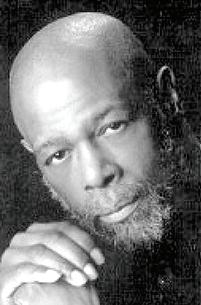
If you look at the before and after of this Pentecostal happening, you’ll begin to see my point. Prior to this, the faithful were huddled in secrecy, being faithful to the belief that what Jesus had told them was indeed true. God would send another. That ‘Other” turned out to be the Holy Spirit, who imbued them with more of what they already had. Their confidence in the truth of Jesus, coupled with their discipline to spread that word, manifested itself in their ability to communicate the gospel to the world.
In what is your confidence and discipline based?
Where do you get the necessary power to have your gifts fortified? Does your faith give you the strength to acquire the discipline necessary to know what you should be doing in the Lord’s name and then do it? I believe the result is the power to know that you can do anything through Christ Jesus. I also believe scripture illustrates to us that without spiritually-based discipline, it is practically impossible to stand up to the trials and tribulations of life, but also impossible to withstand the temptations that seek to control our sometimes out-of-control behavior.
You remember Paul at Ephesus? “When Paul placed his hands on them, the Holy Spirit came on them and they spoke in tongues and prophesied.” Acts 19:6. Here, these 12 men were already baptized but knew nothing of the Holy Spirit. After, we are told, they began to preach the gospel. Can’t you see their growing confidence?
There is nothing restrictive about this kind of discipline. It is in fact quite liberating. They knew that they knew the same way we know that we know.
